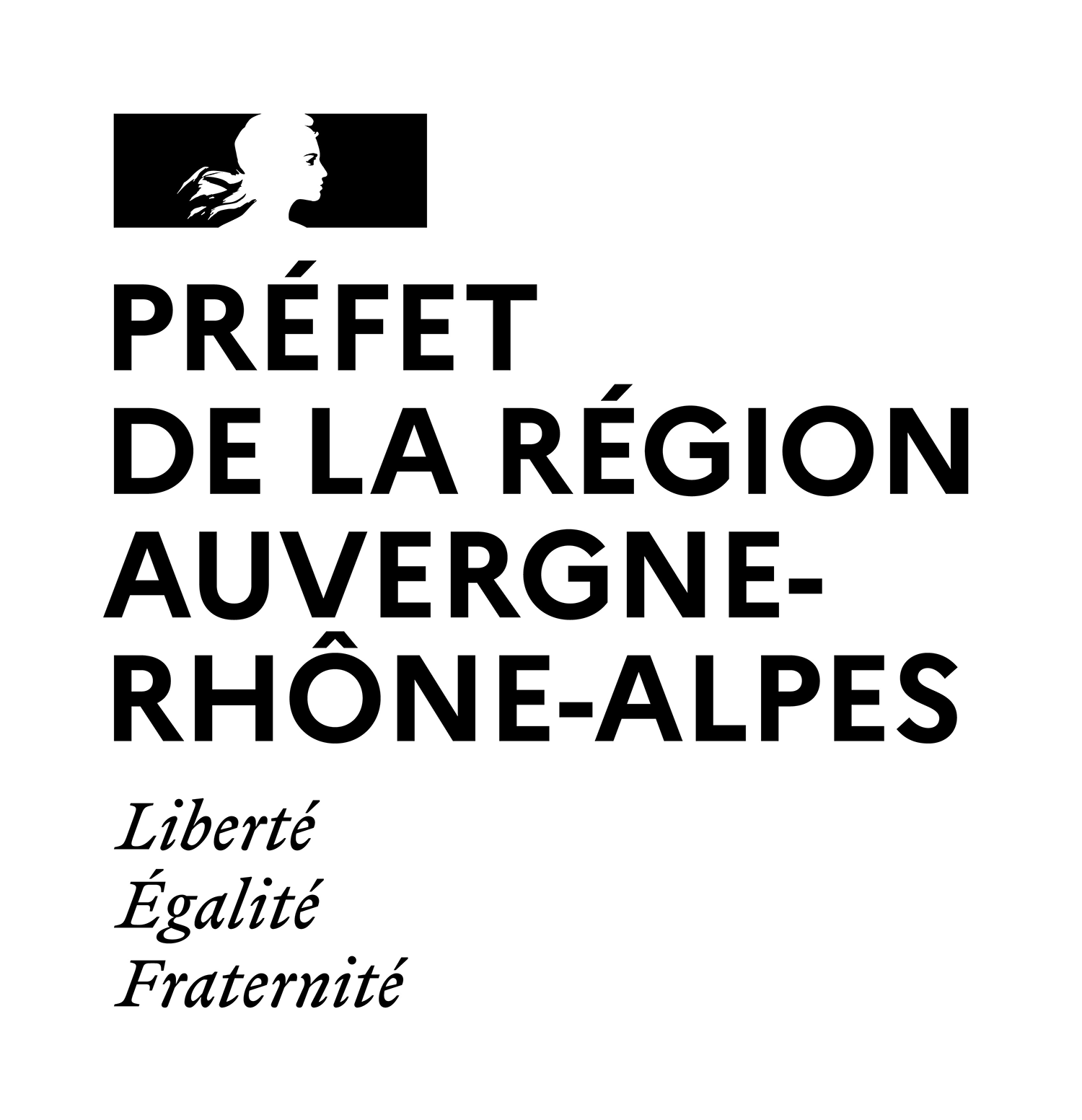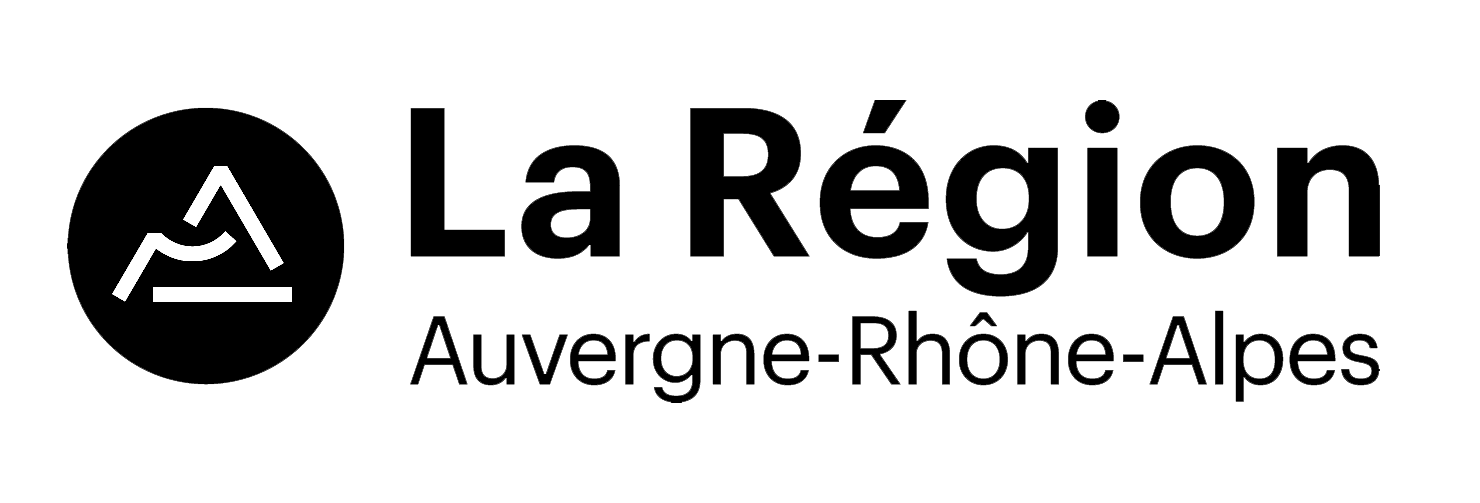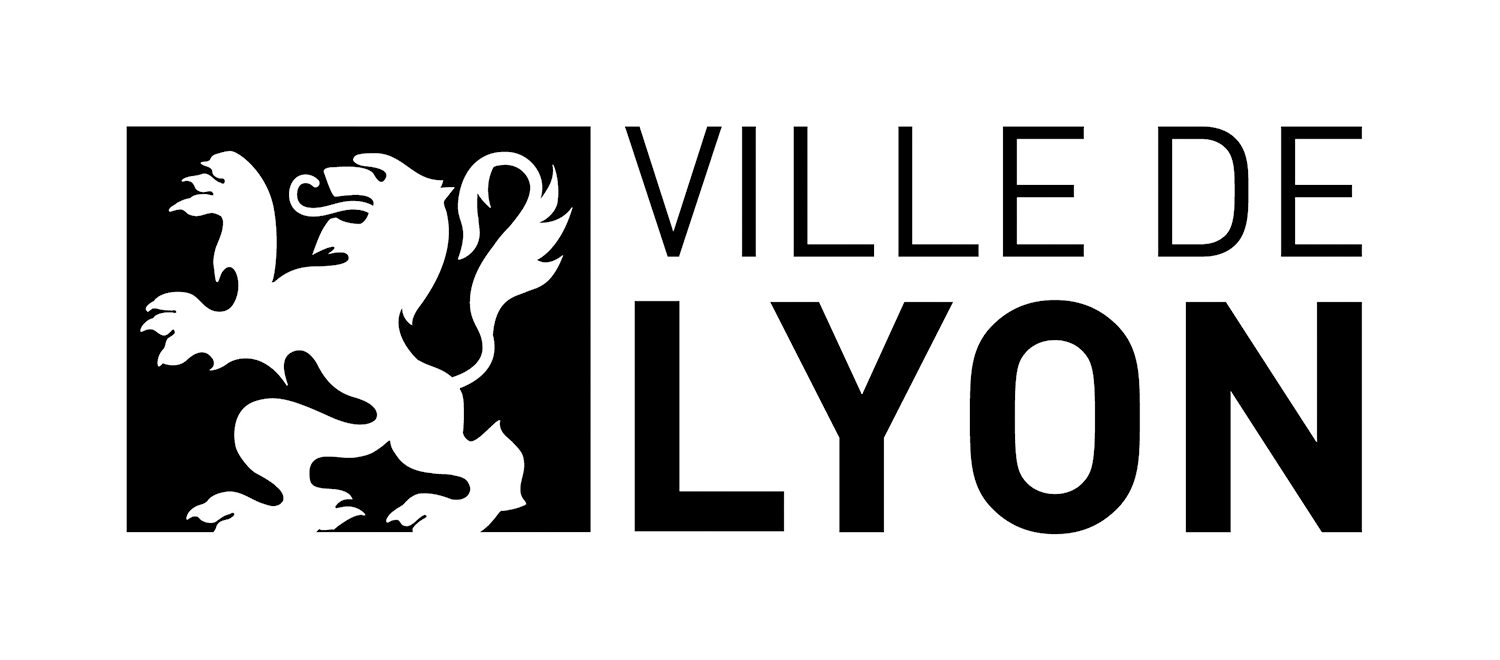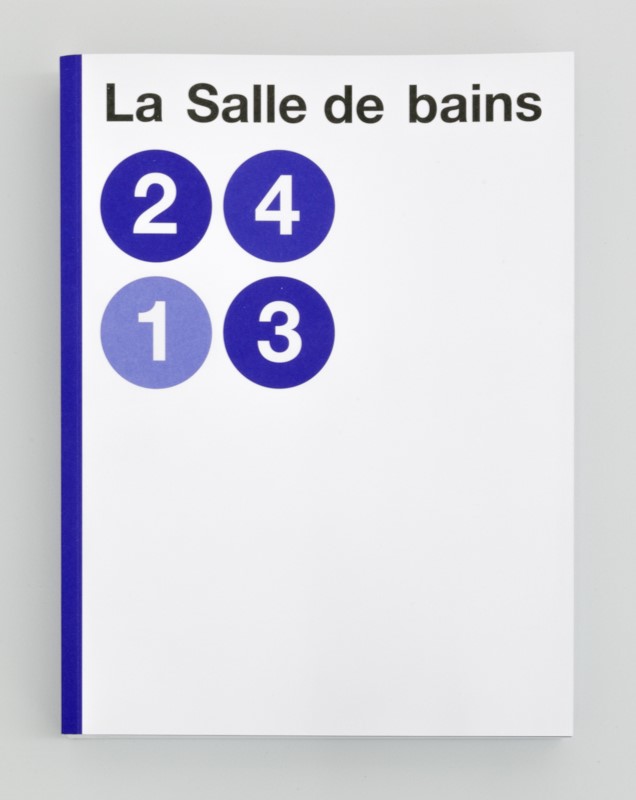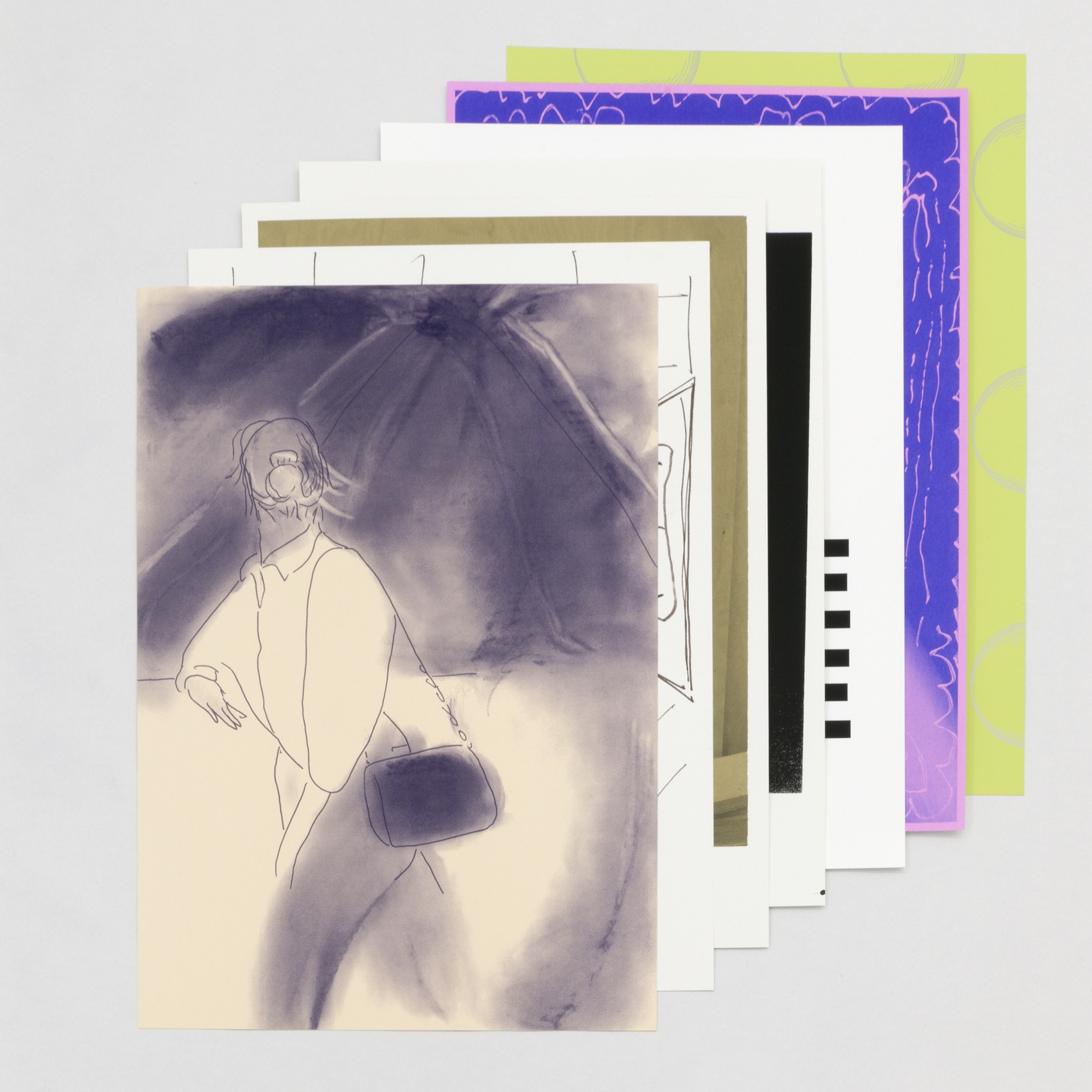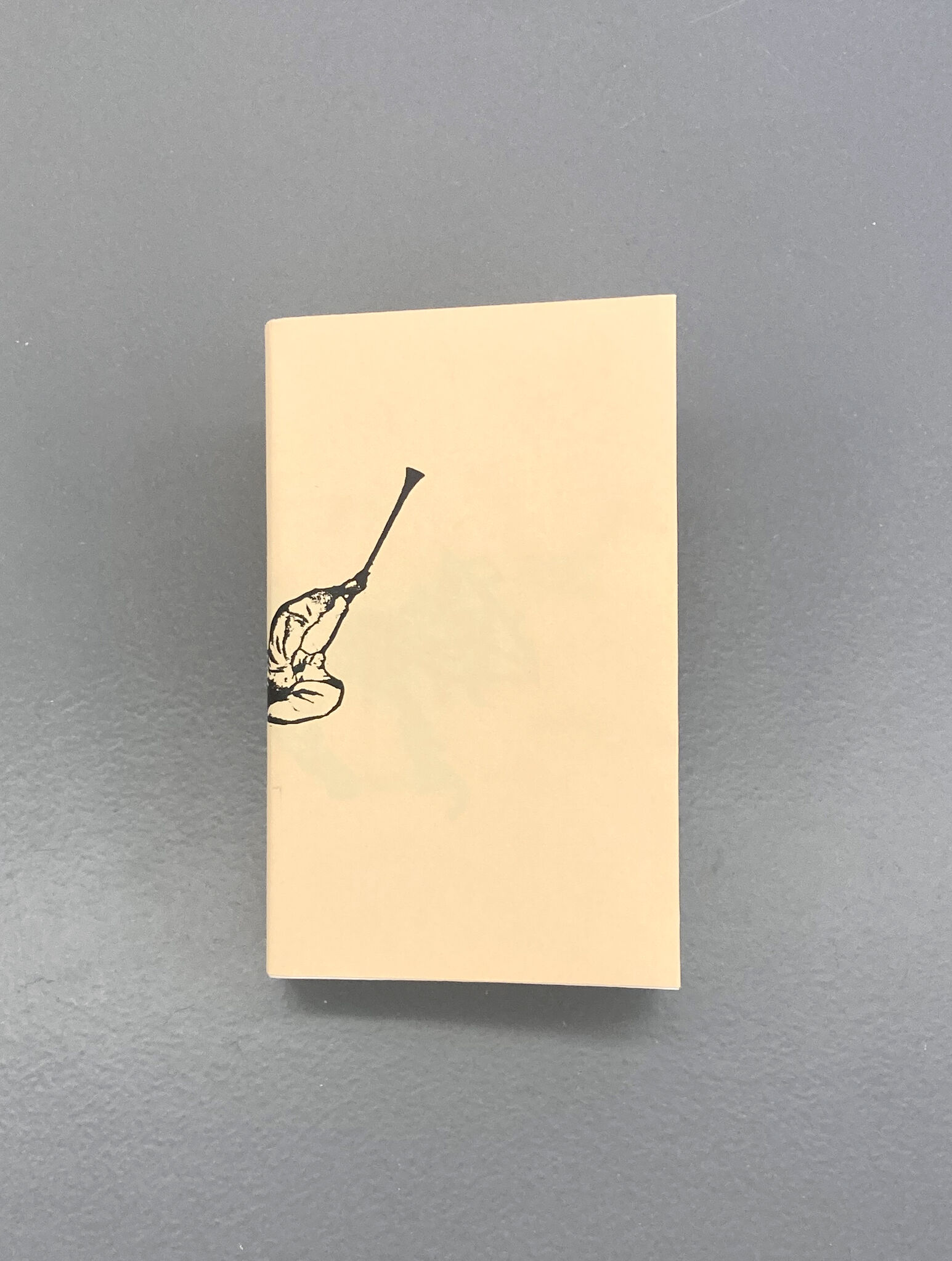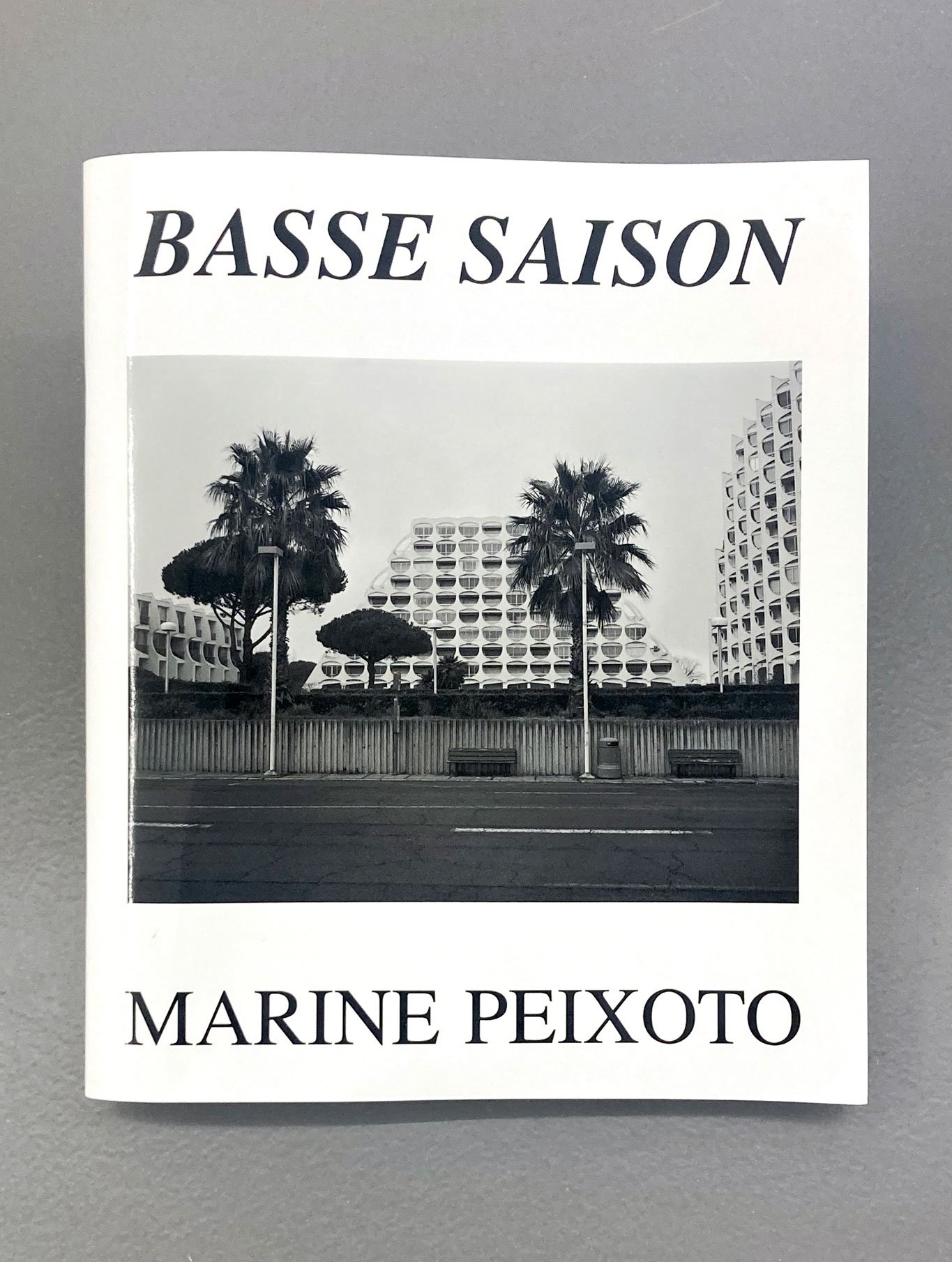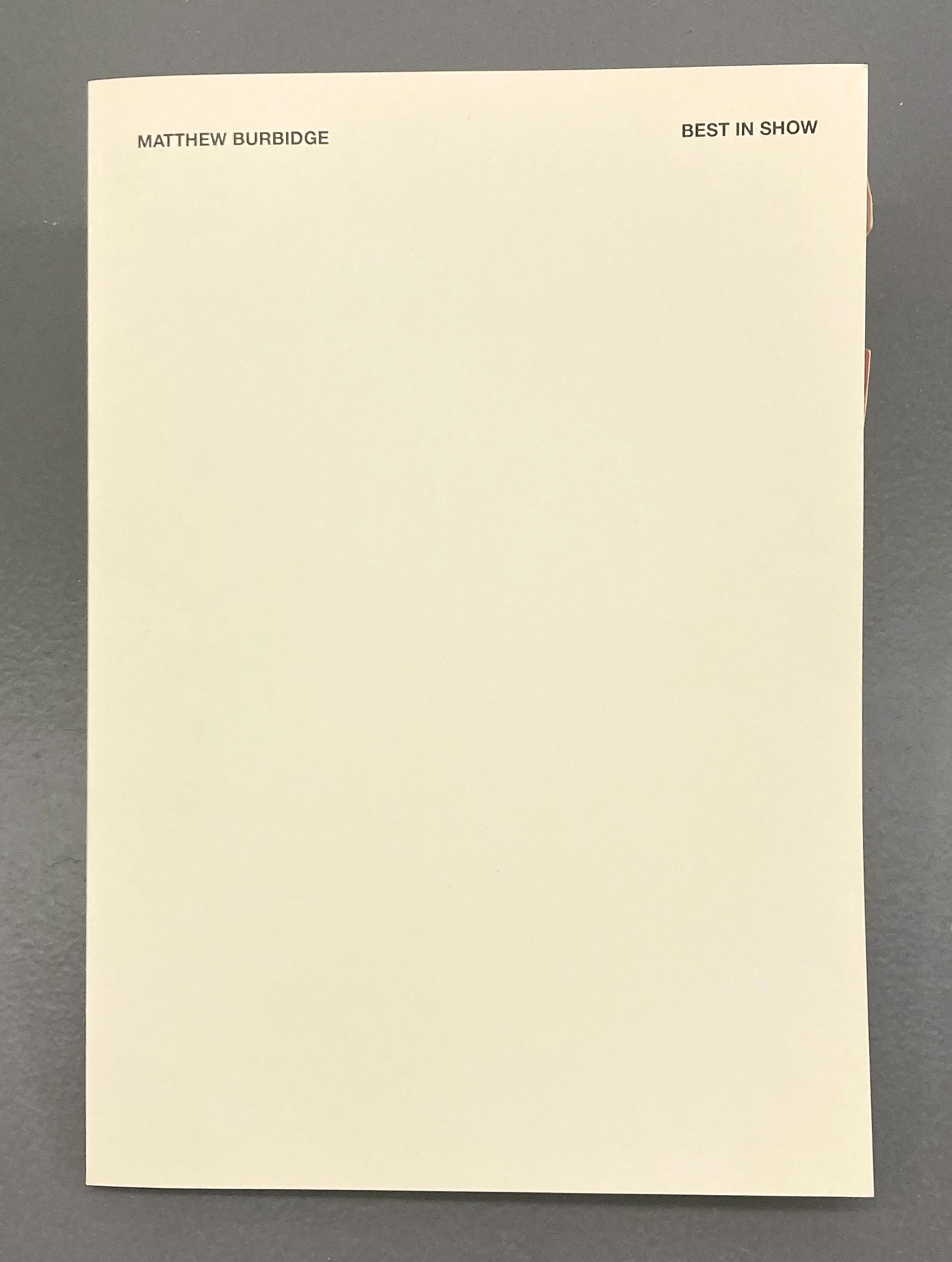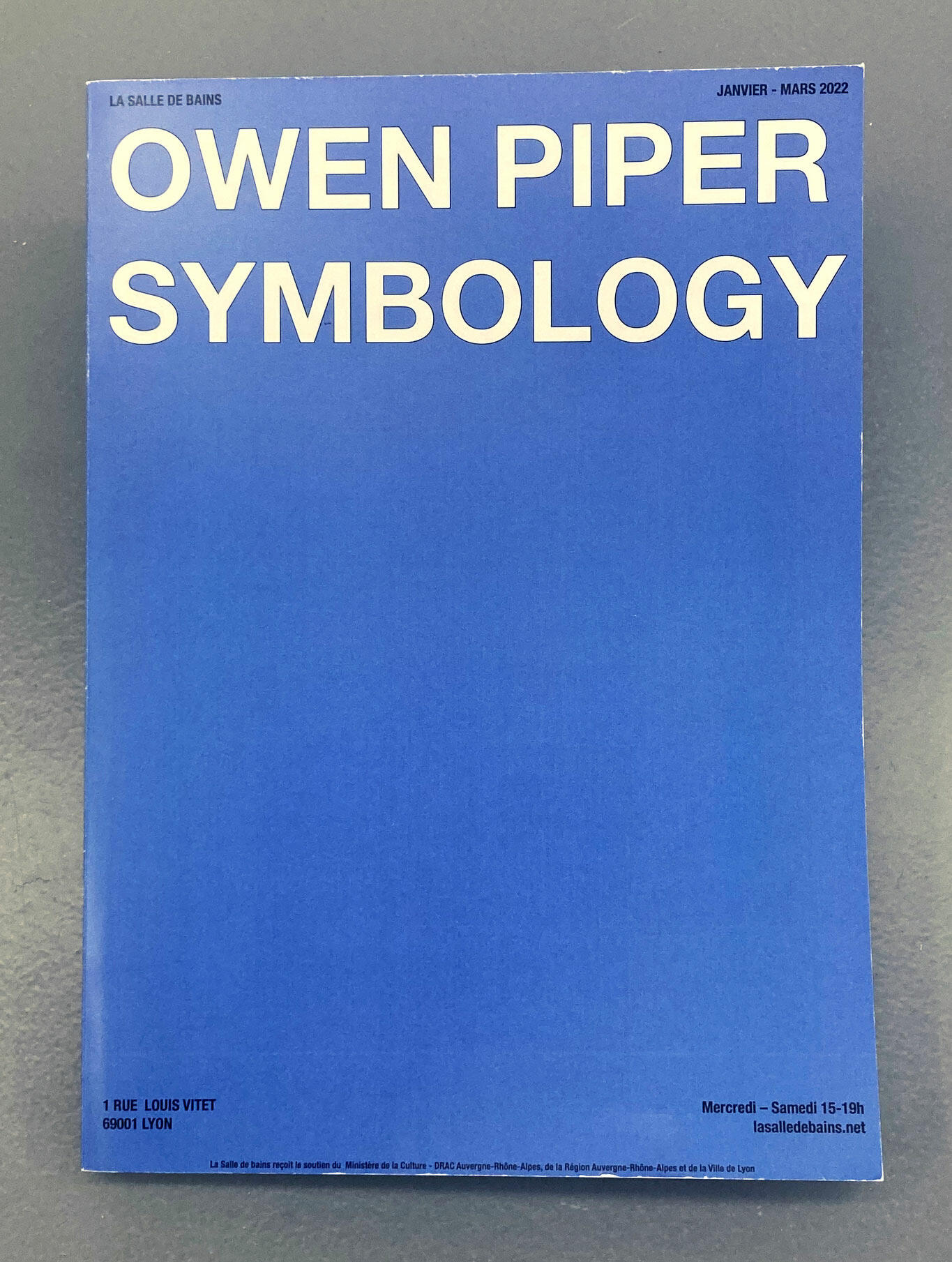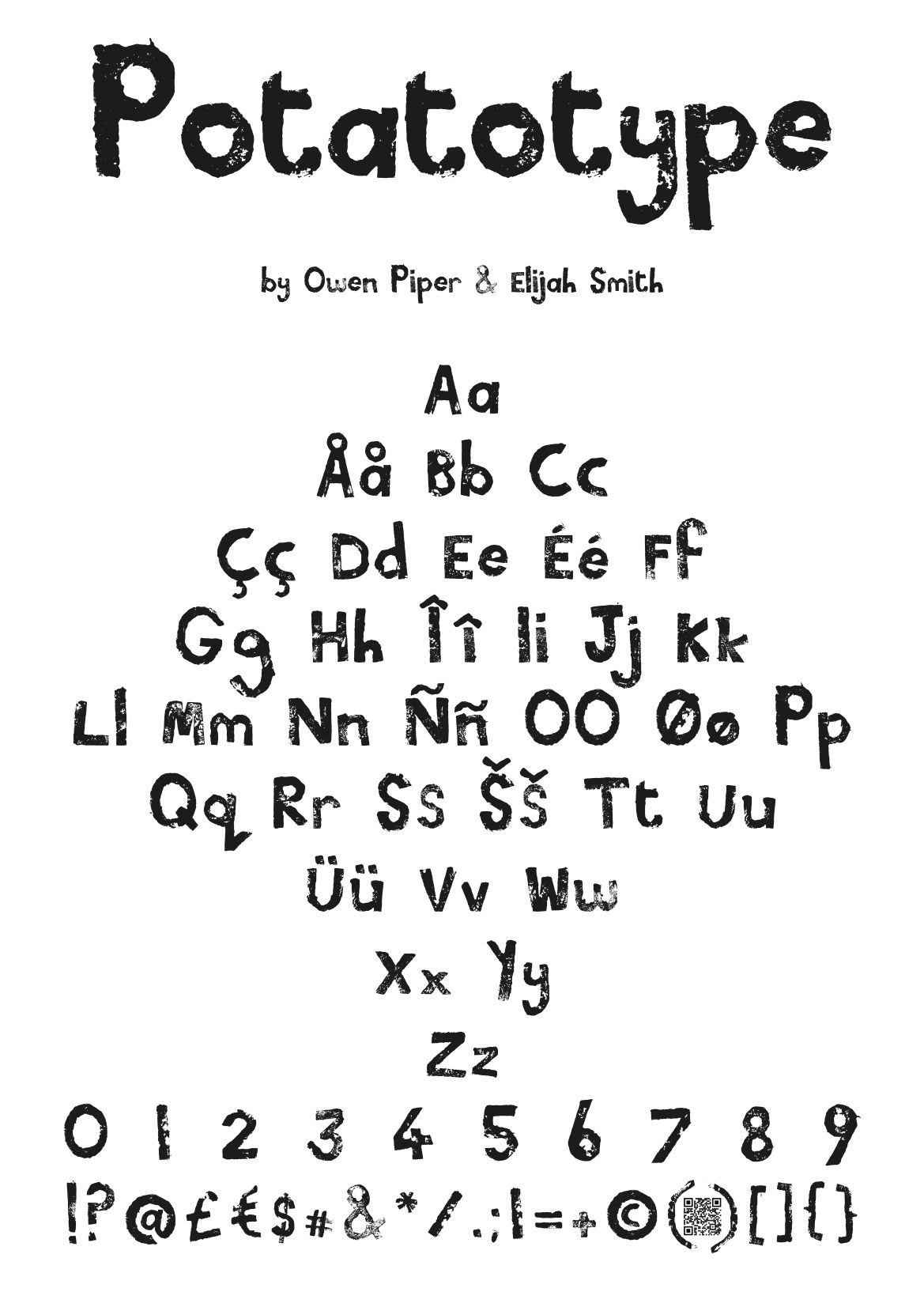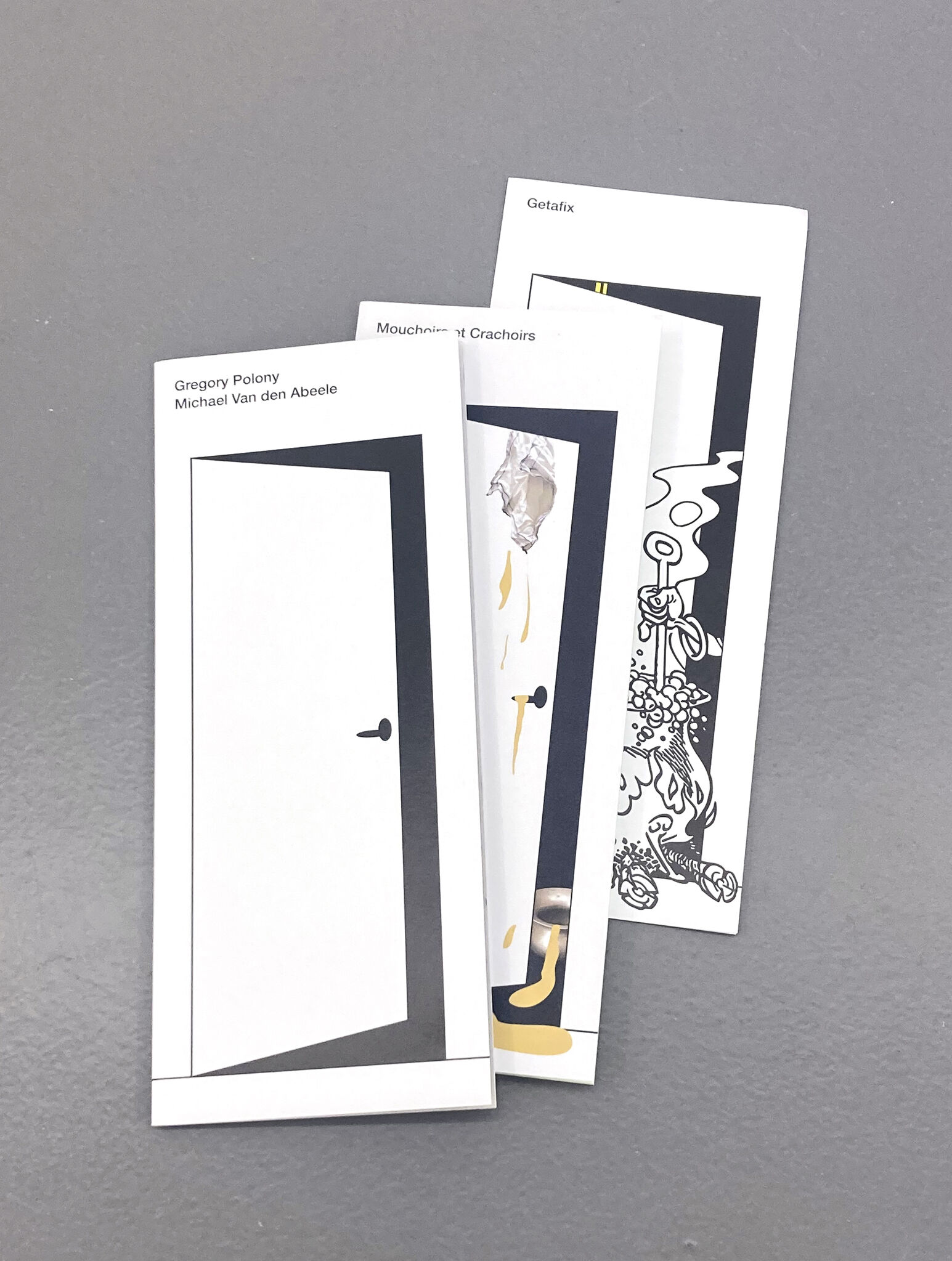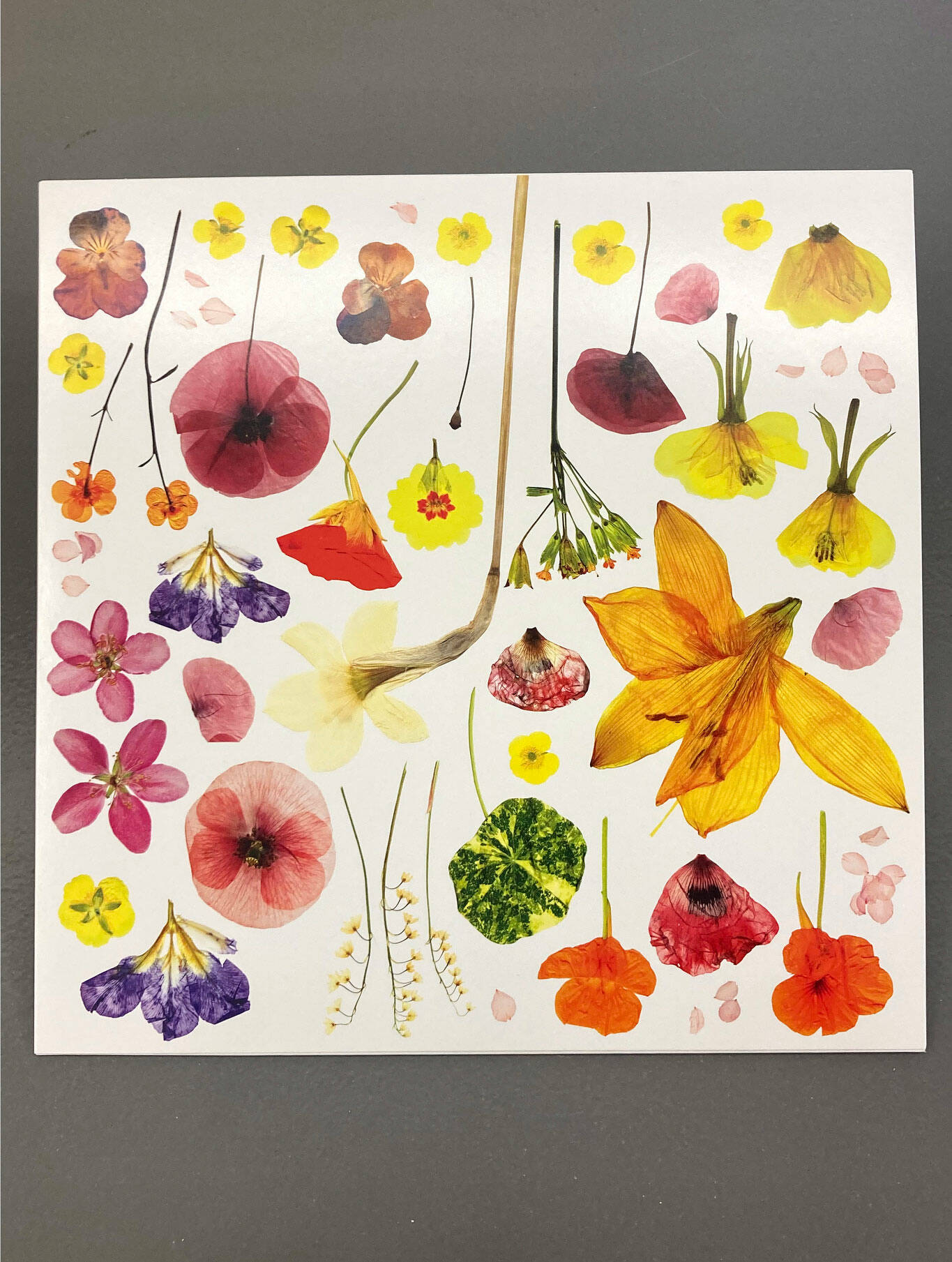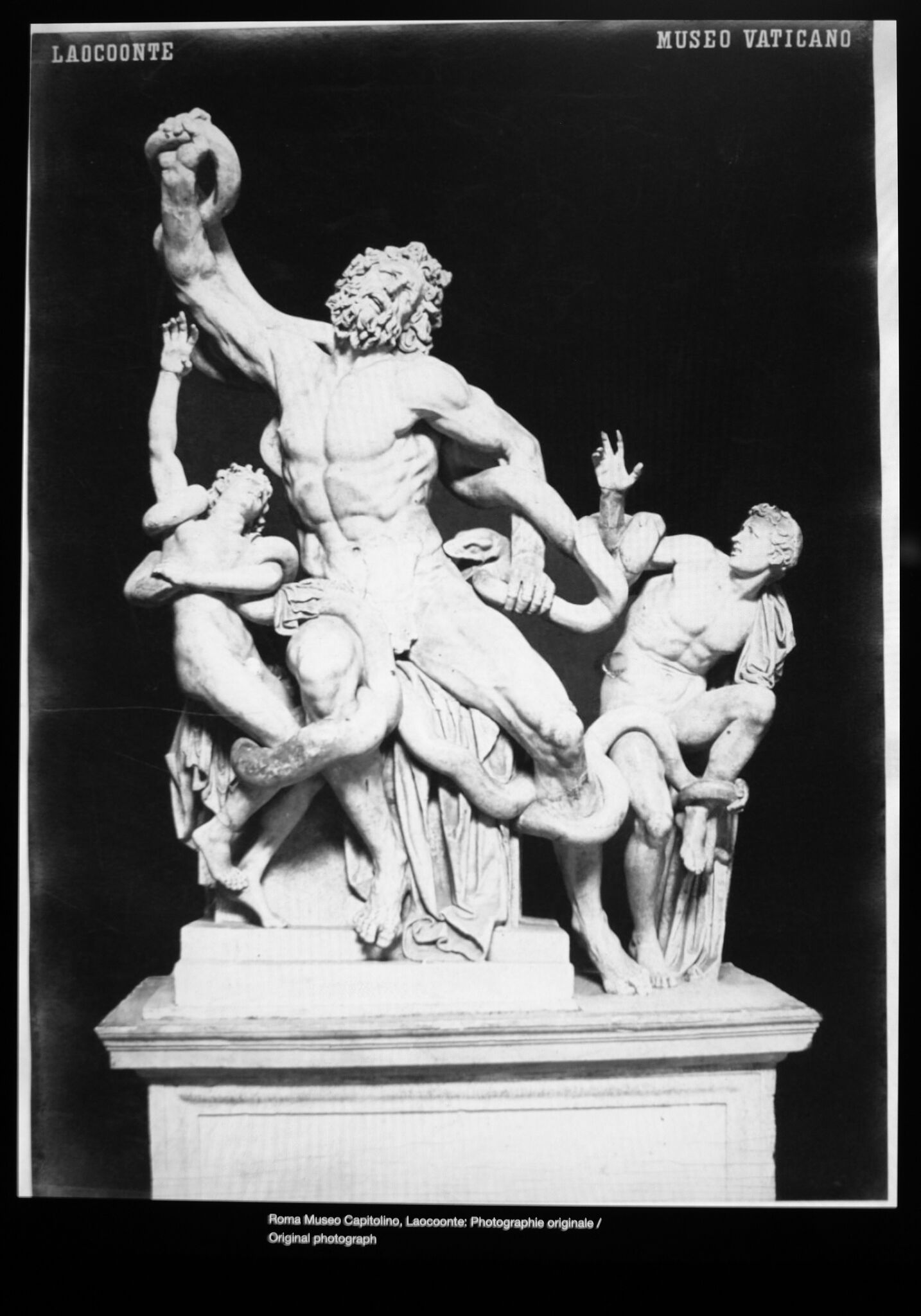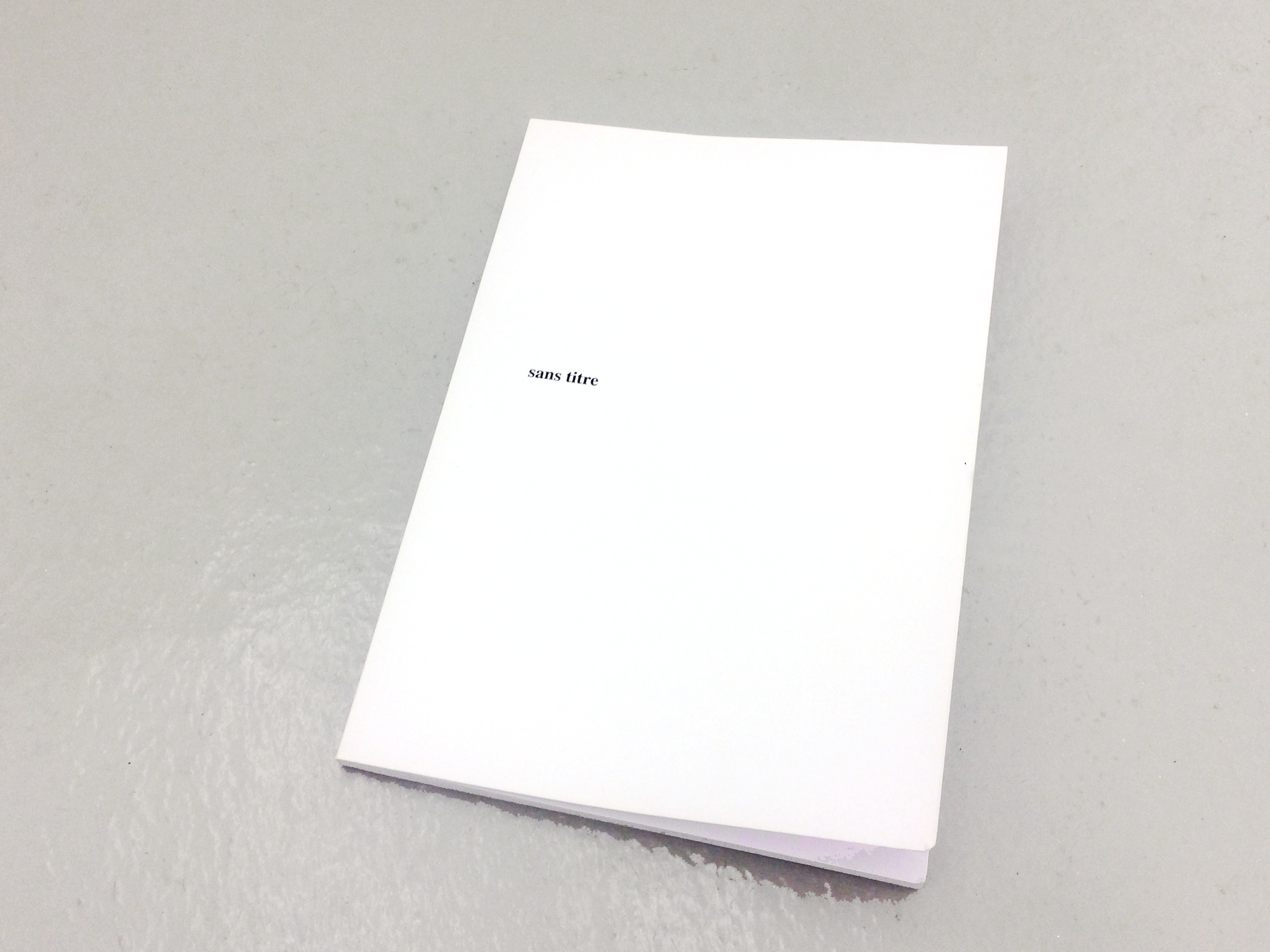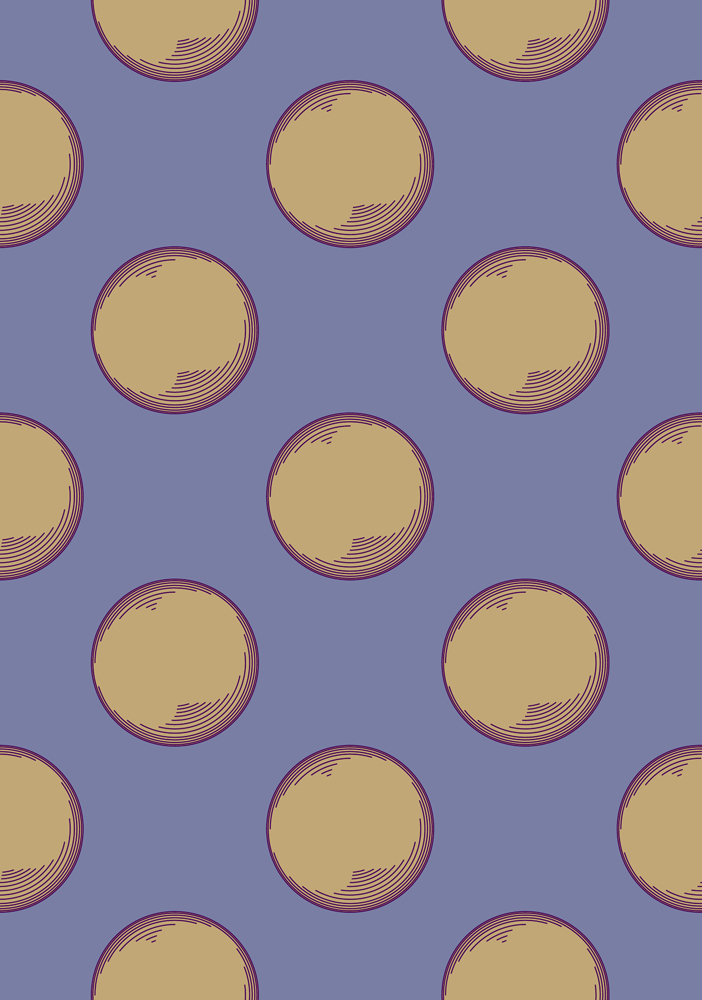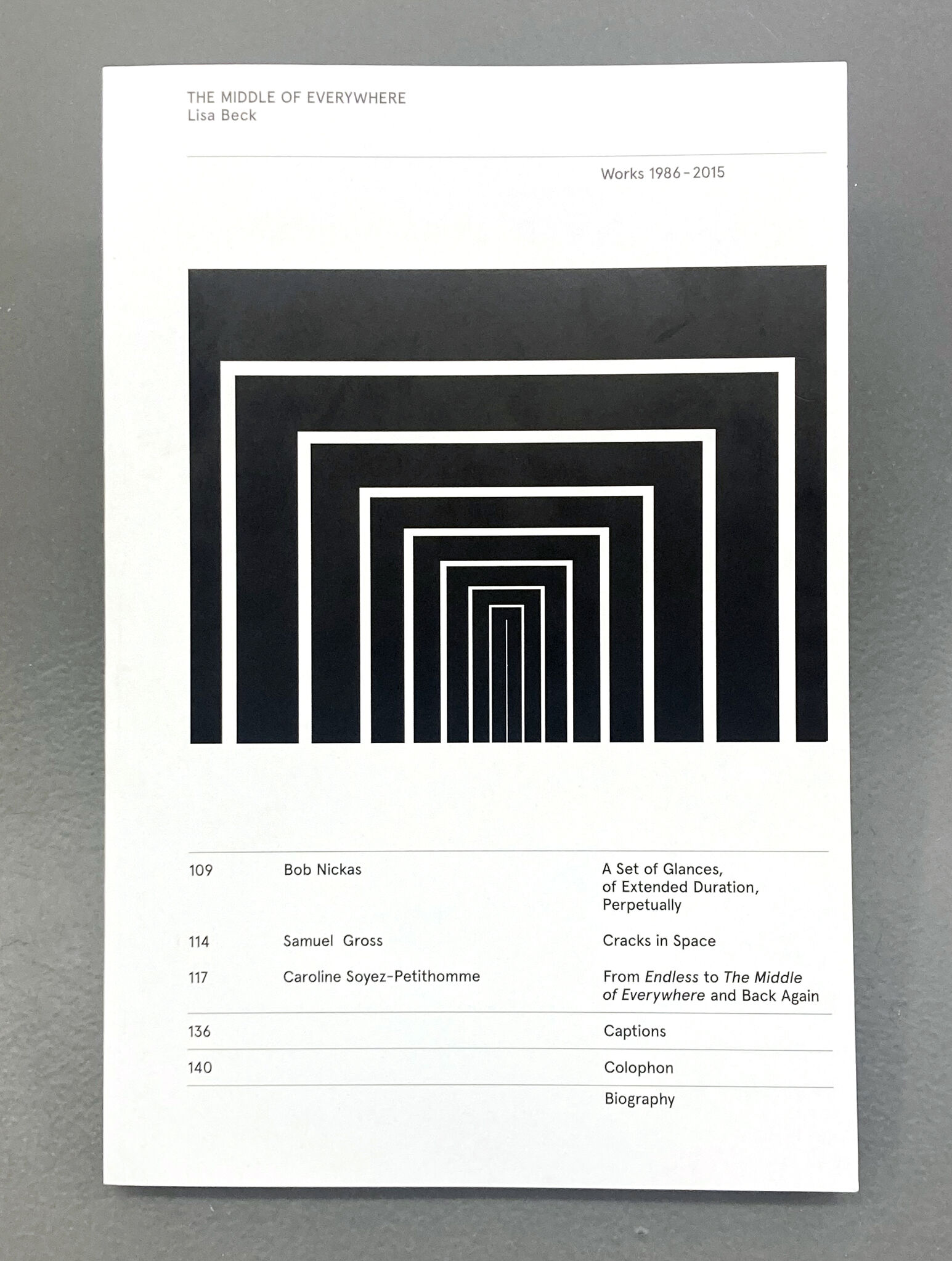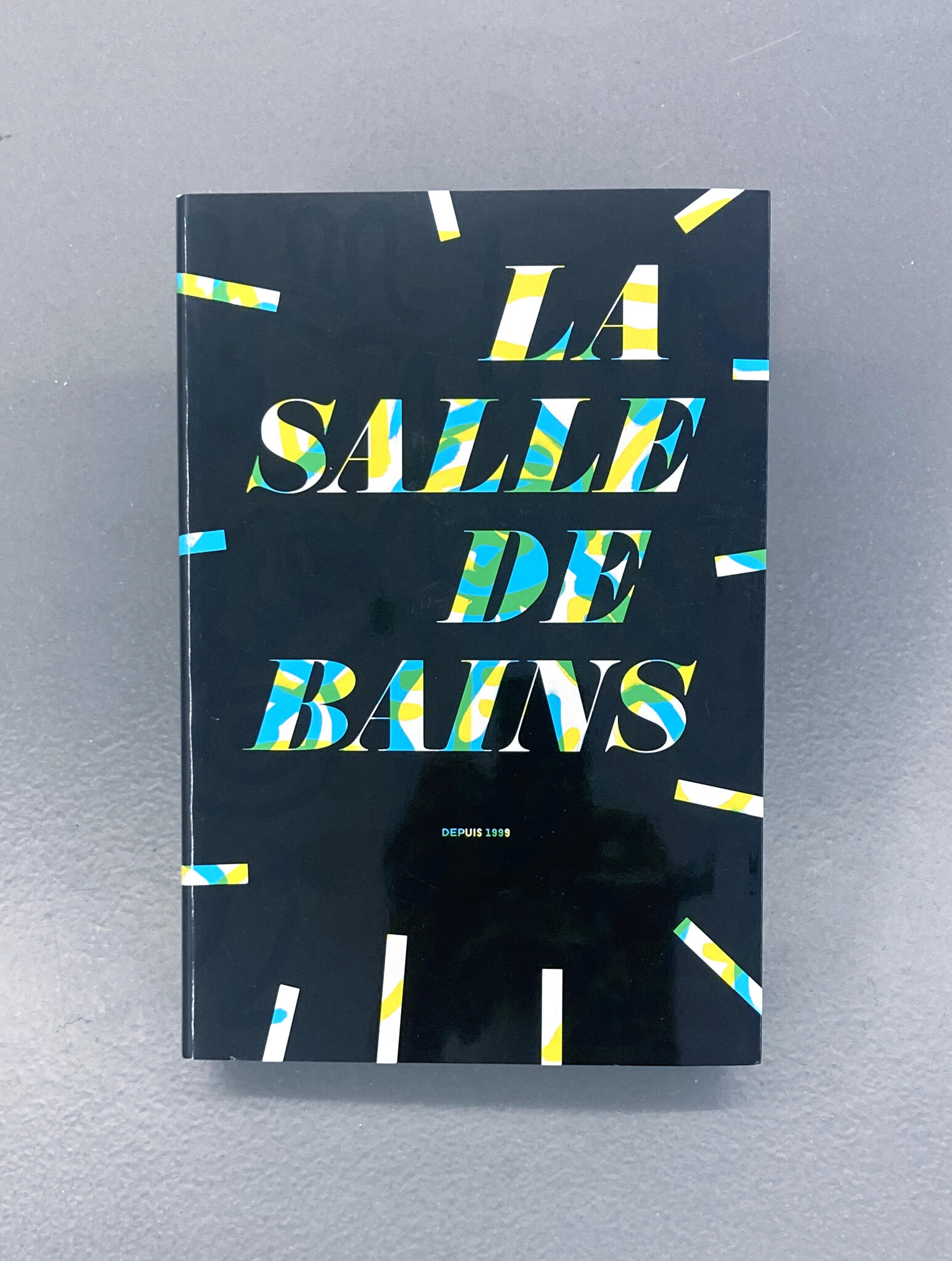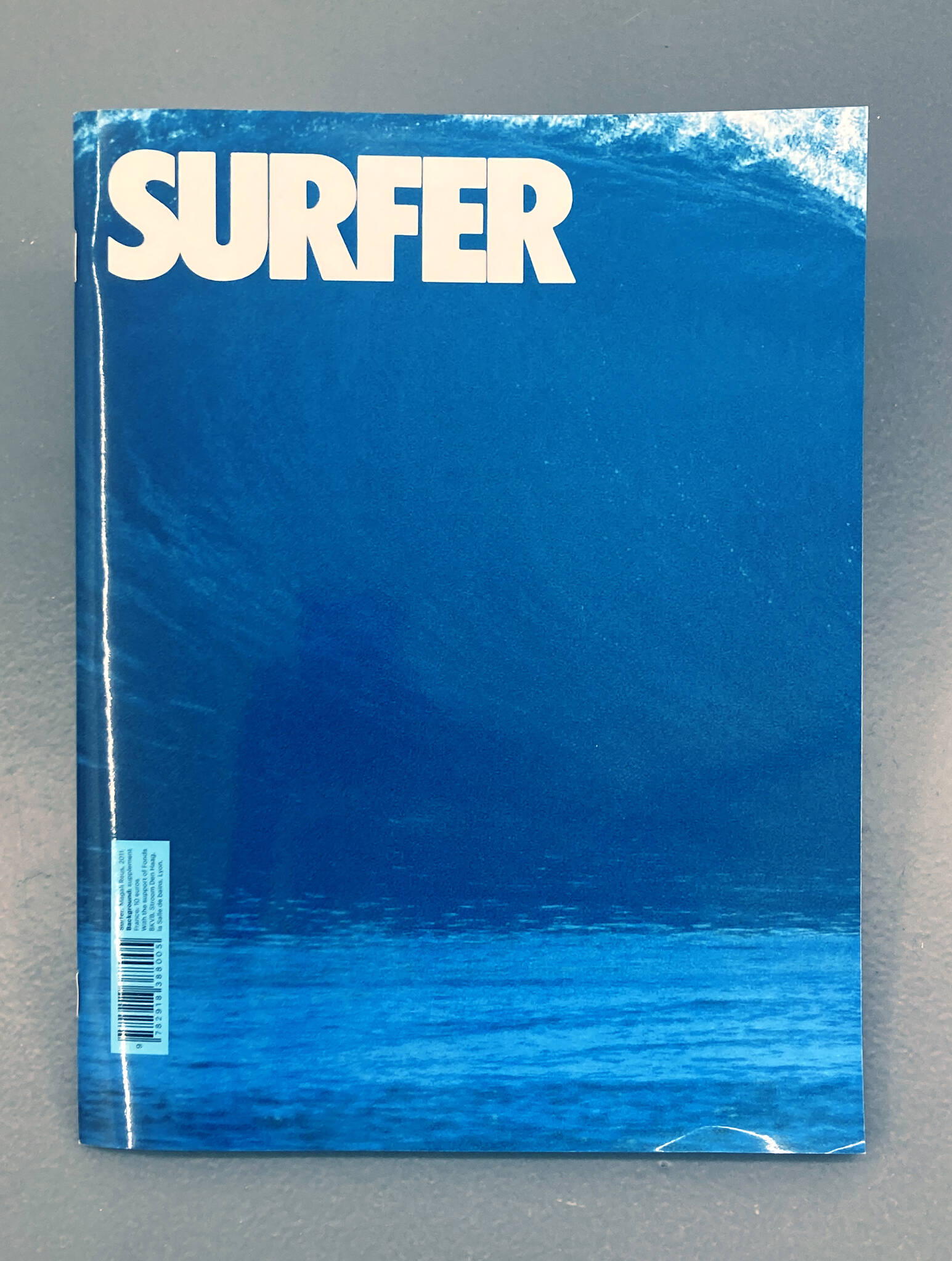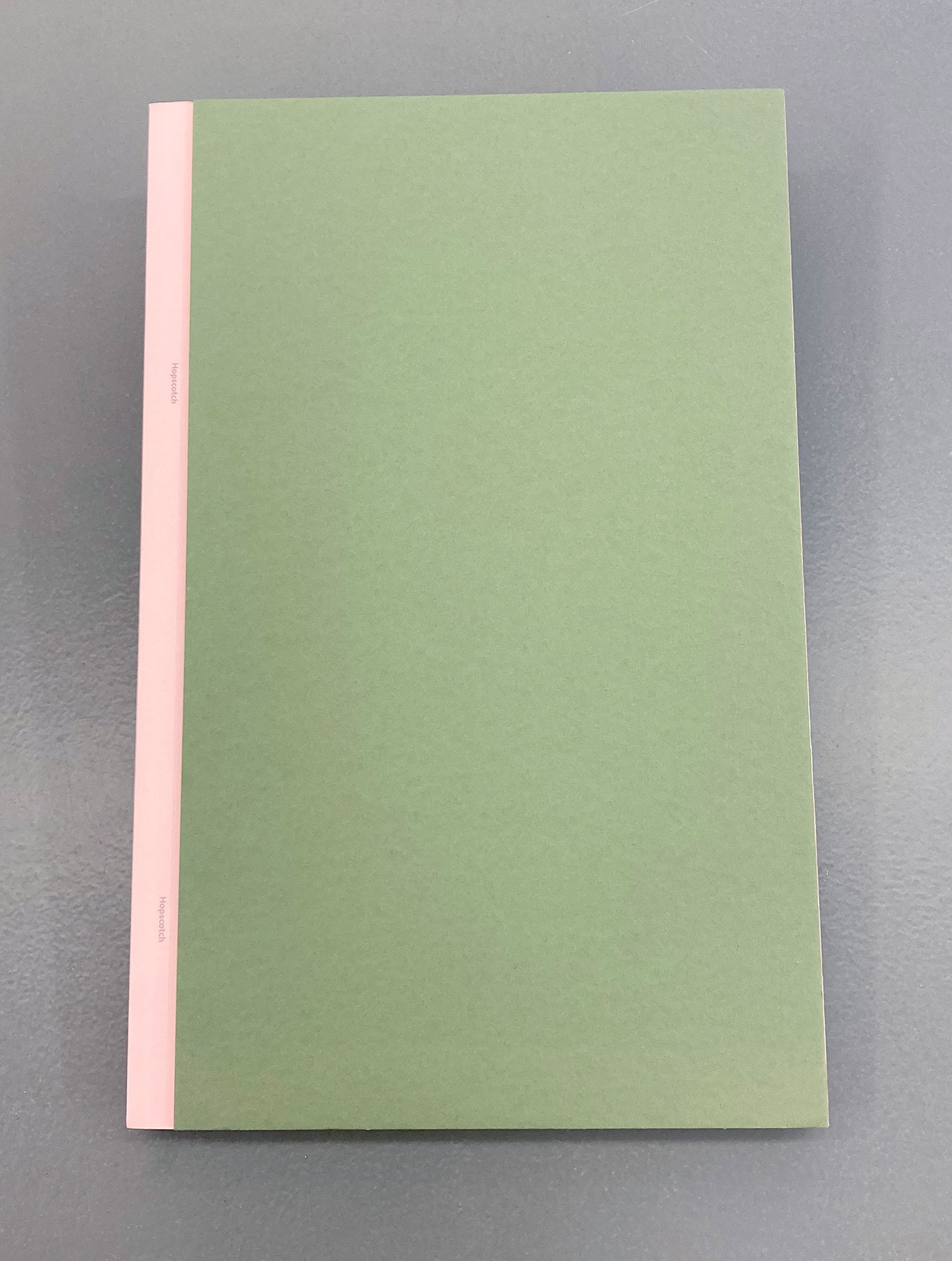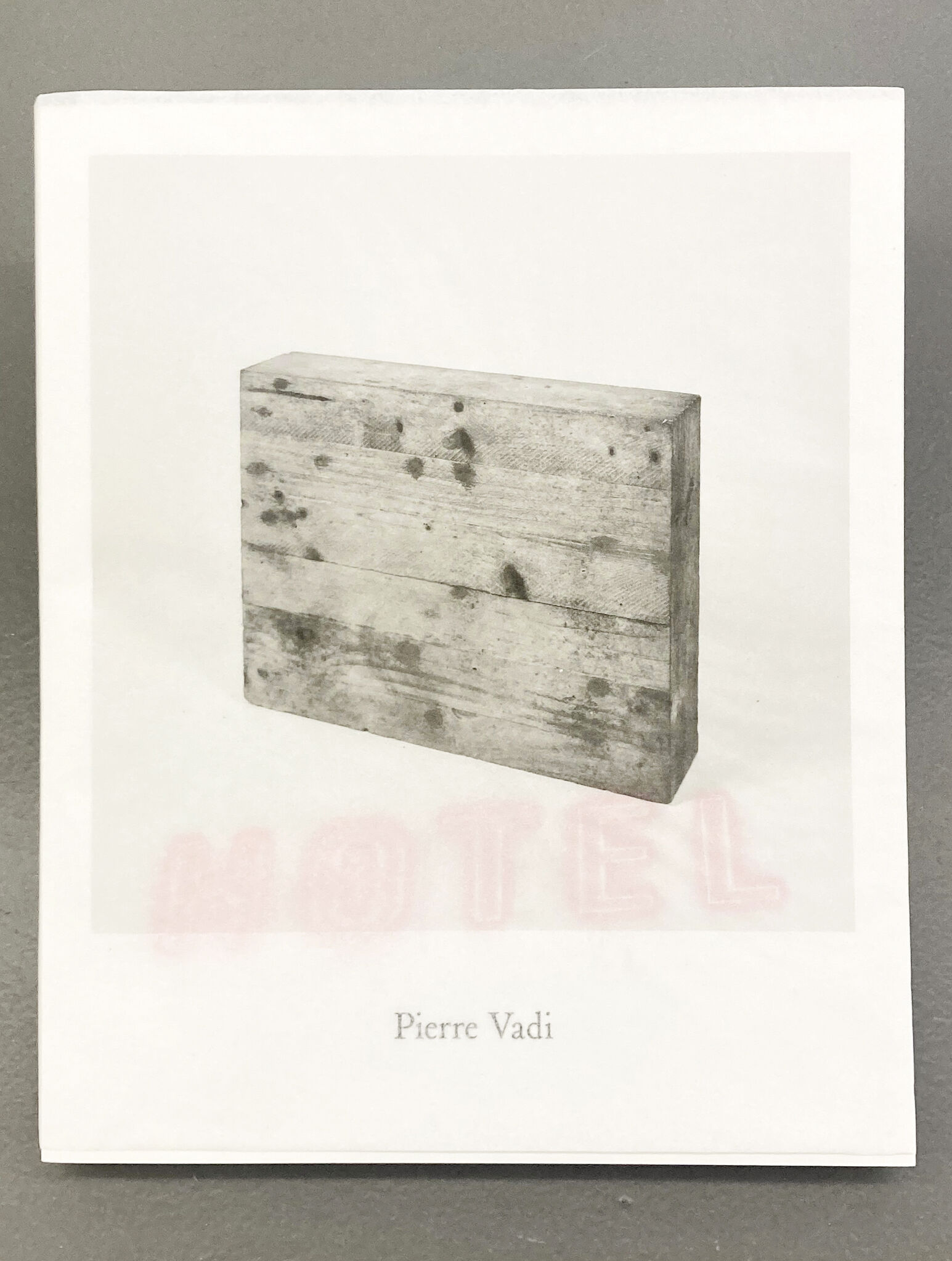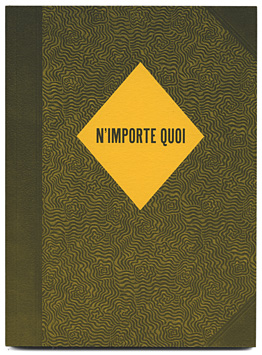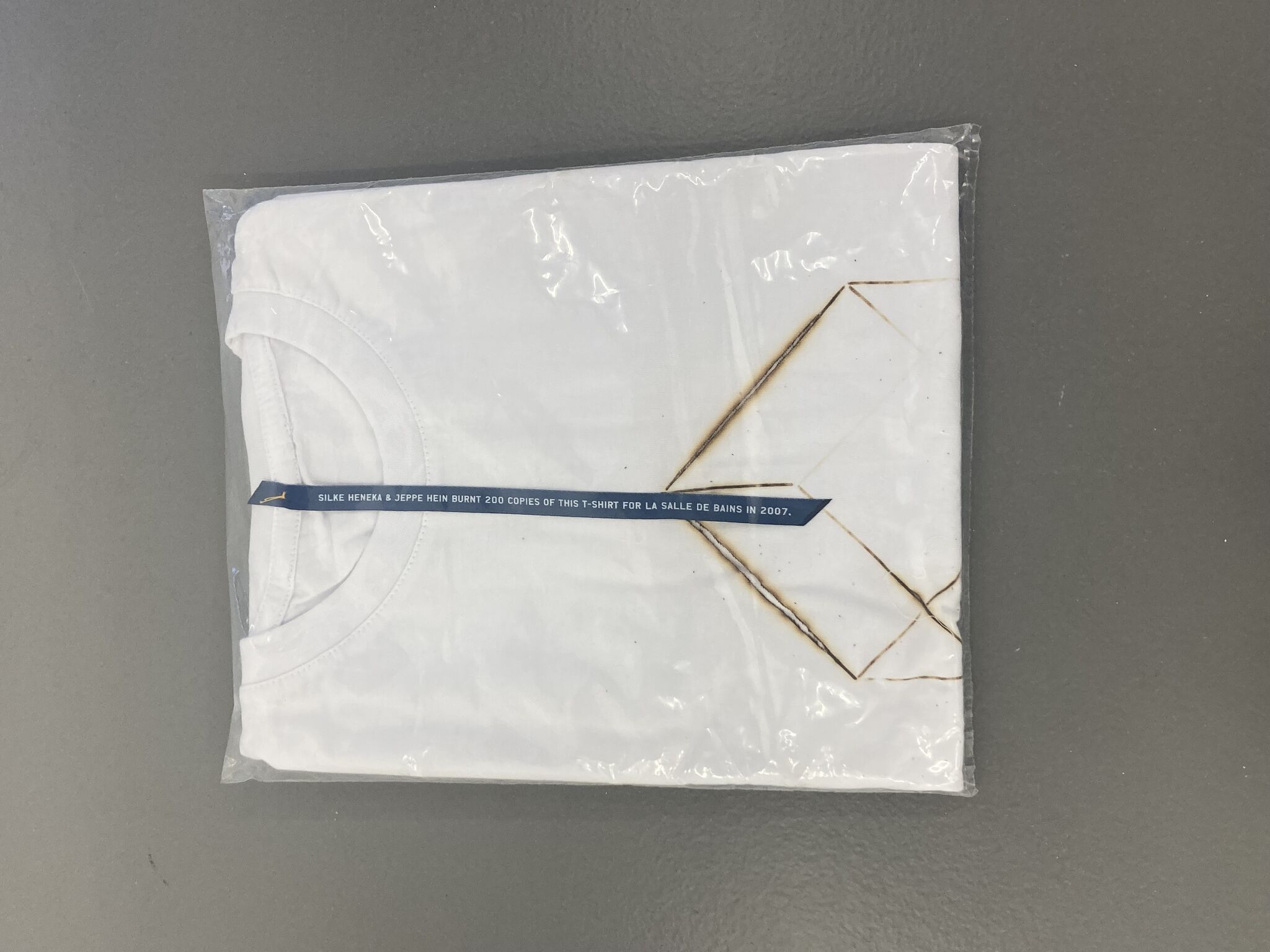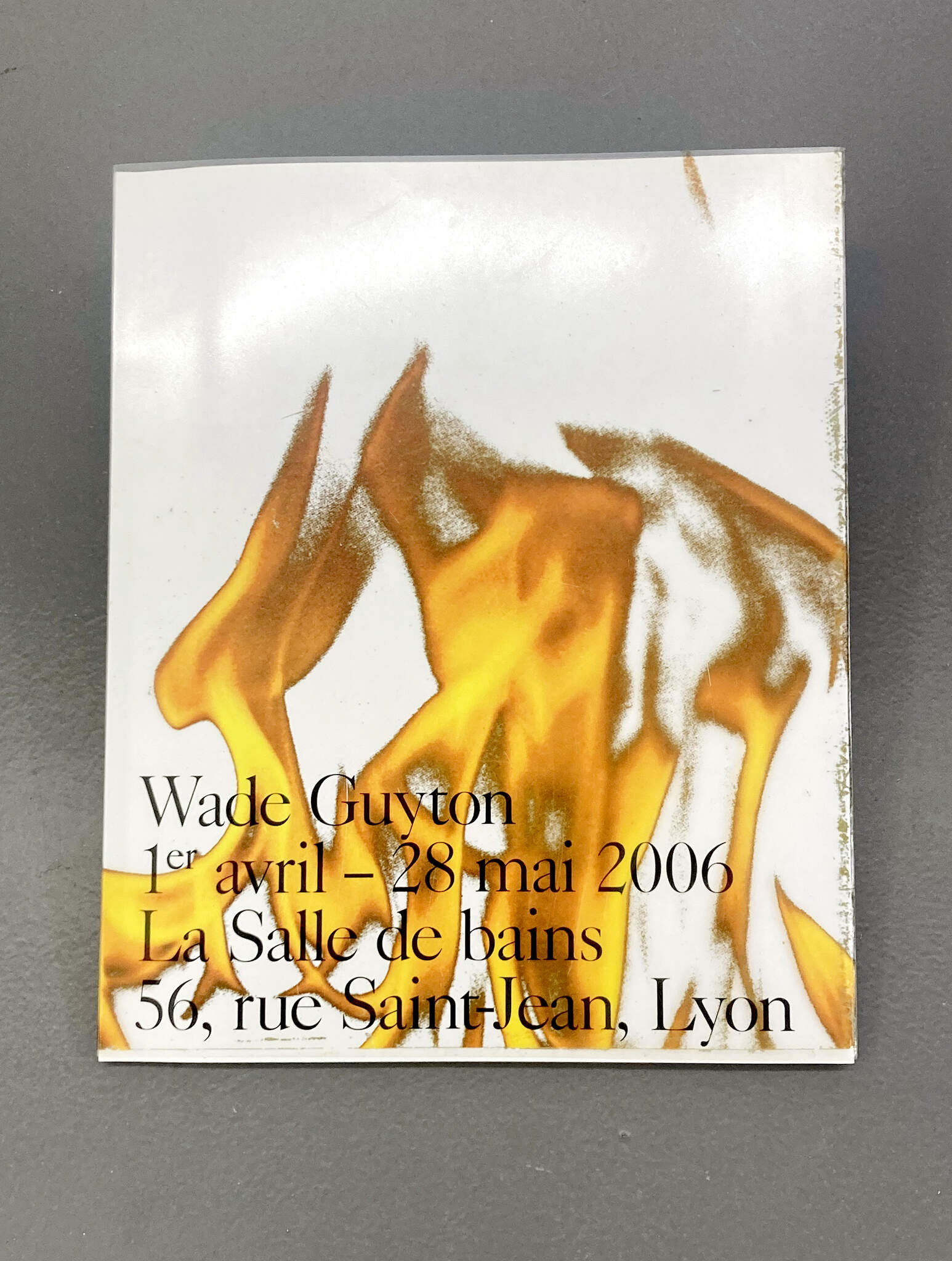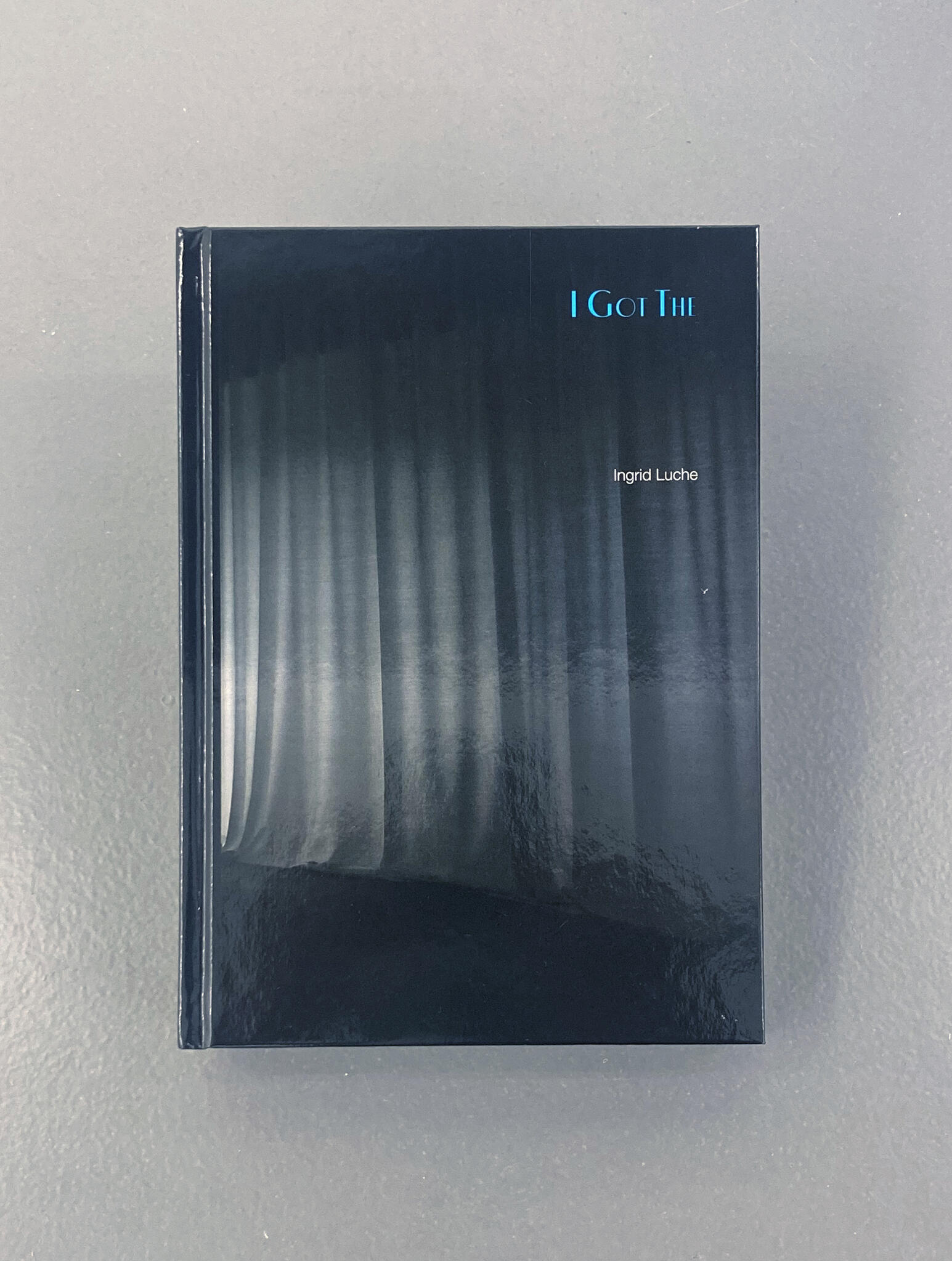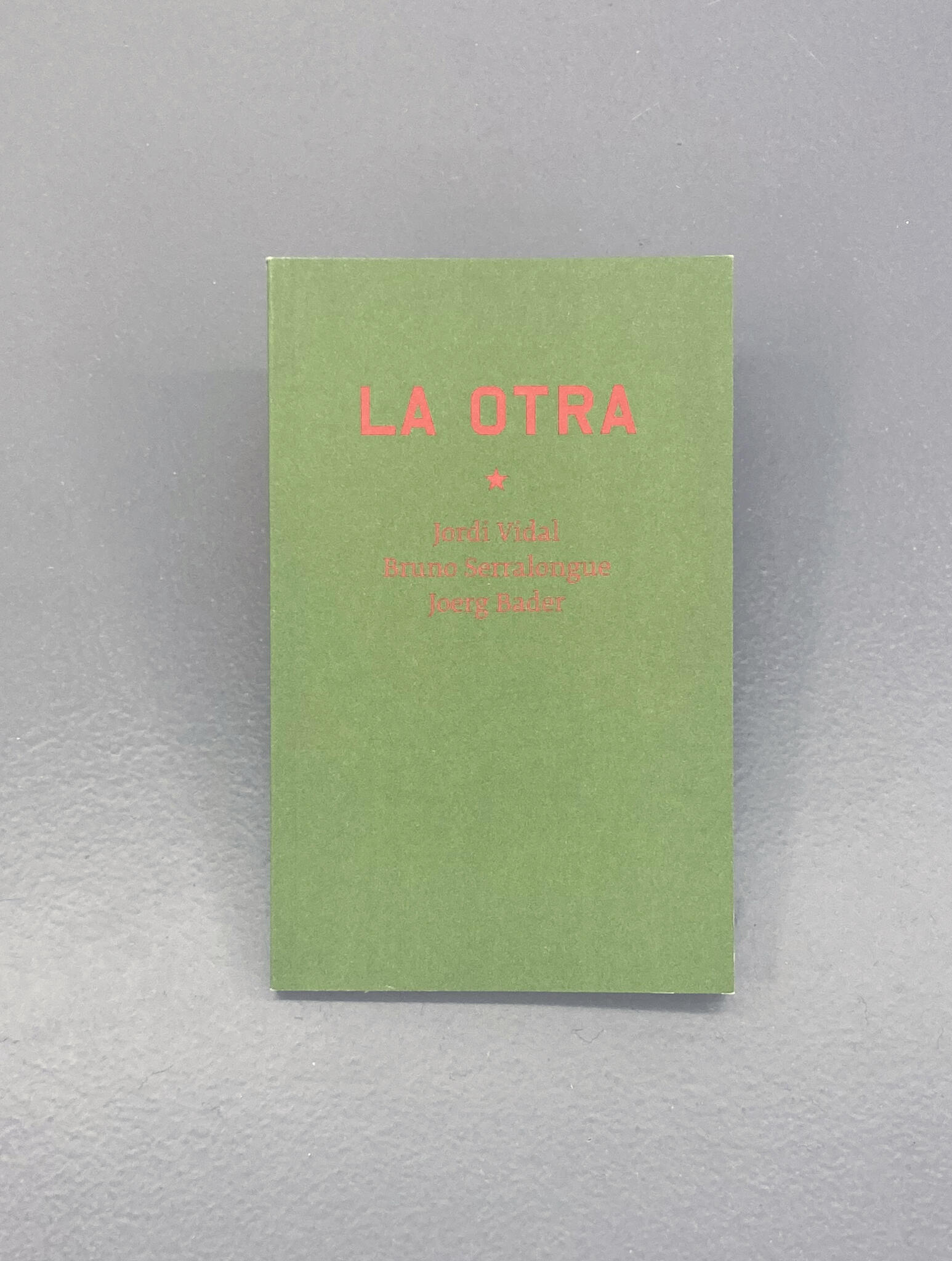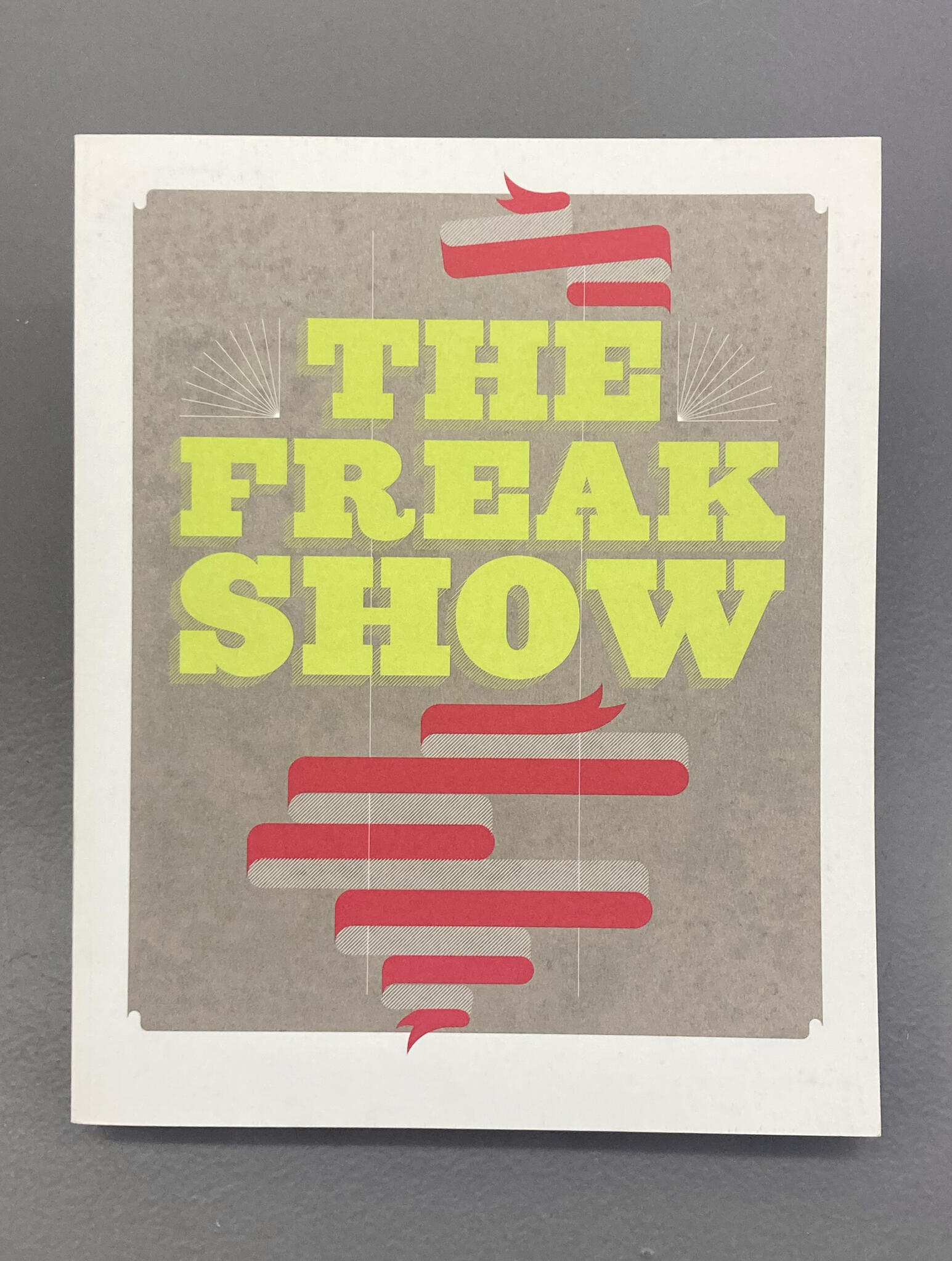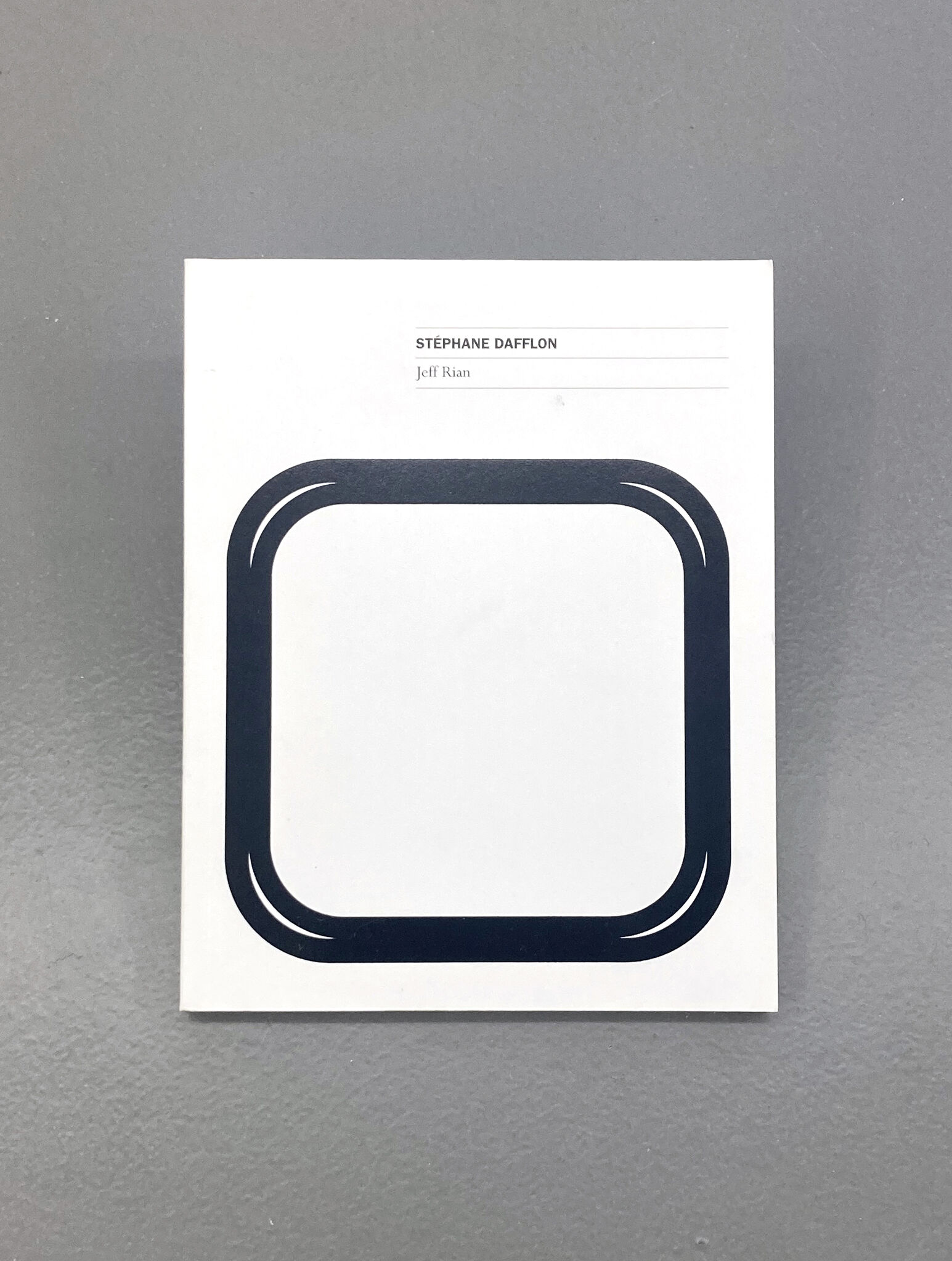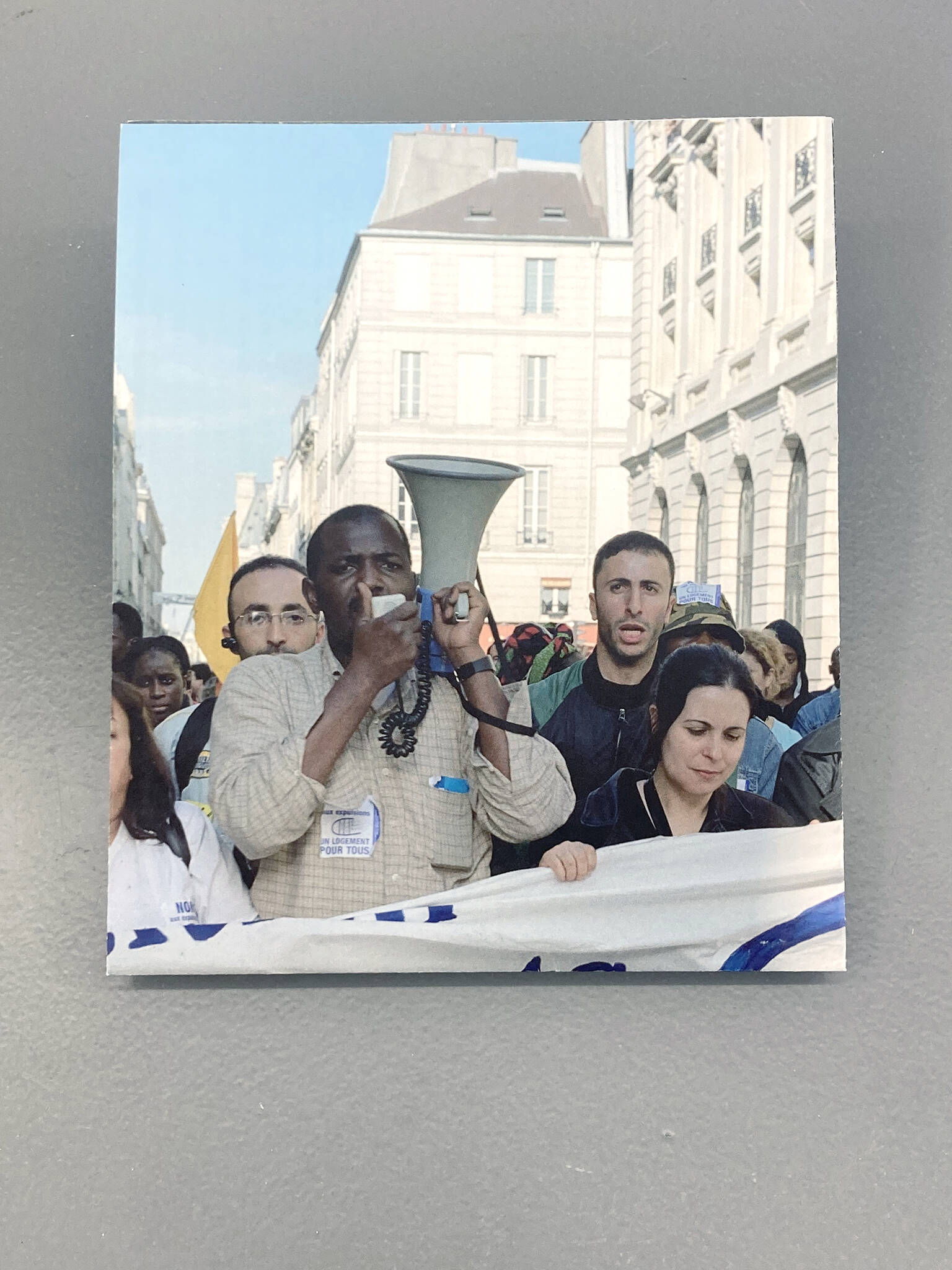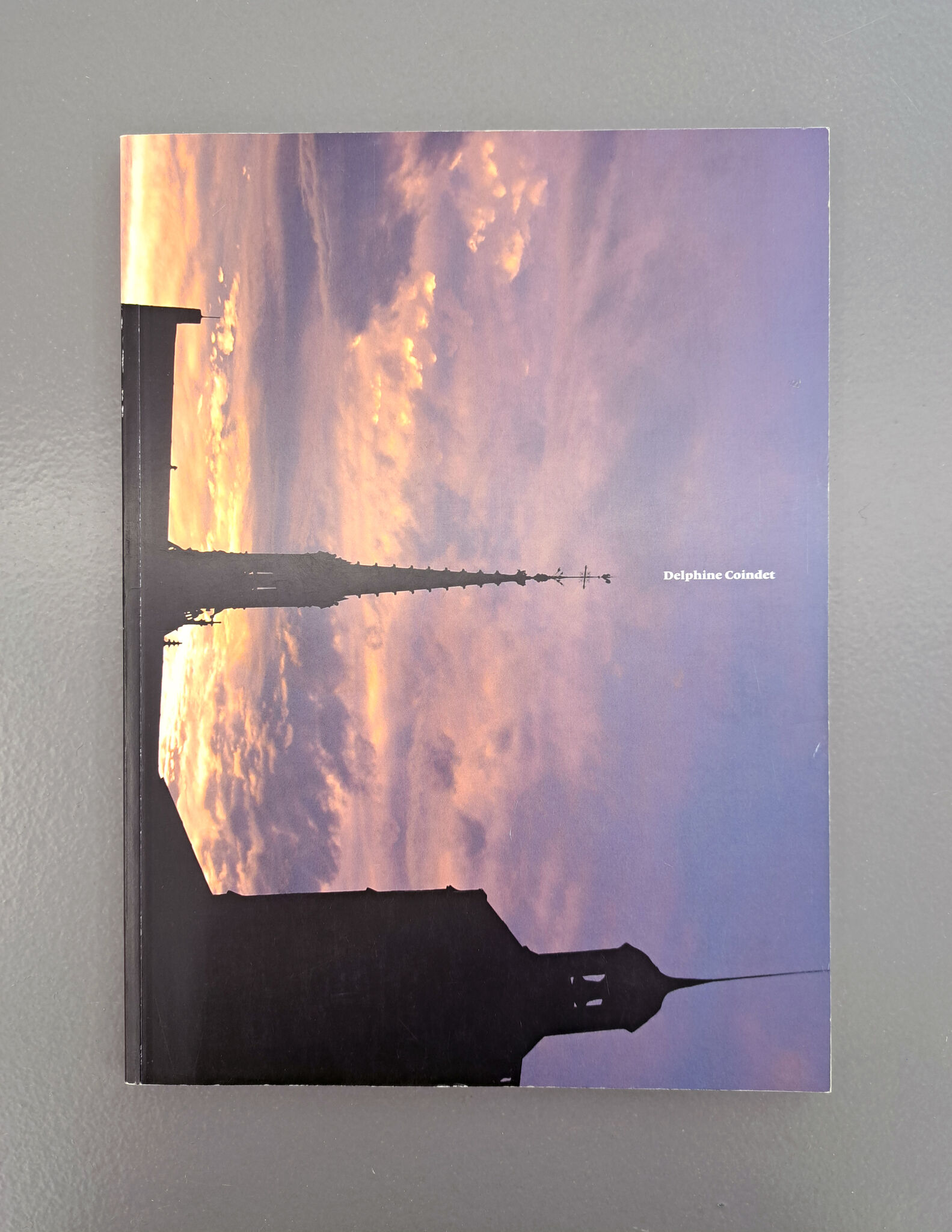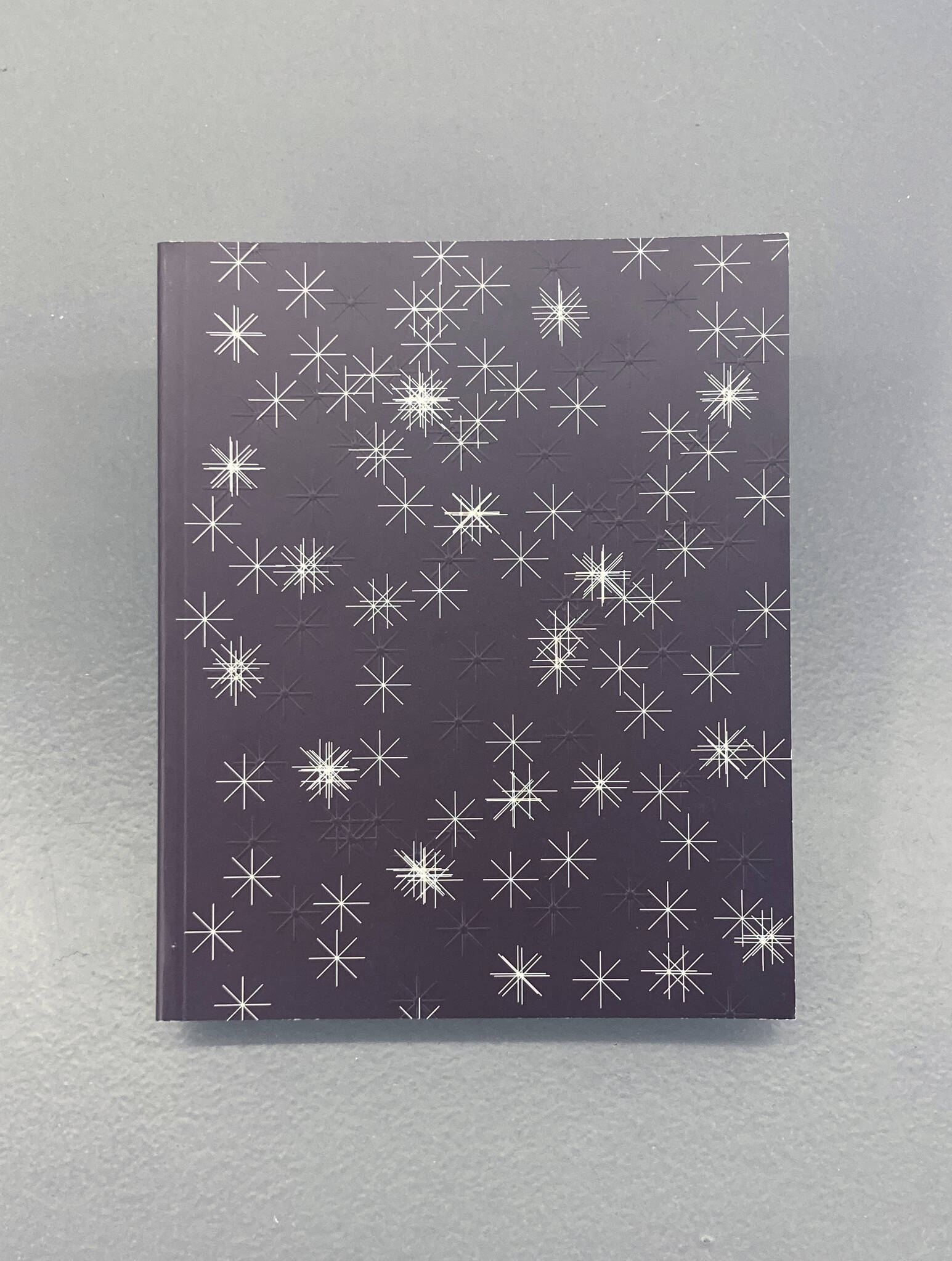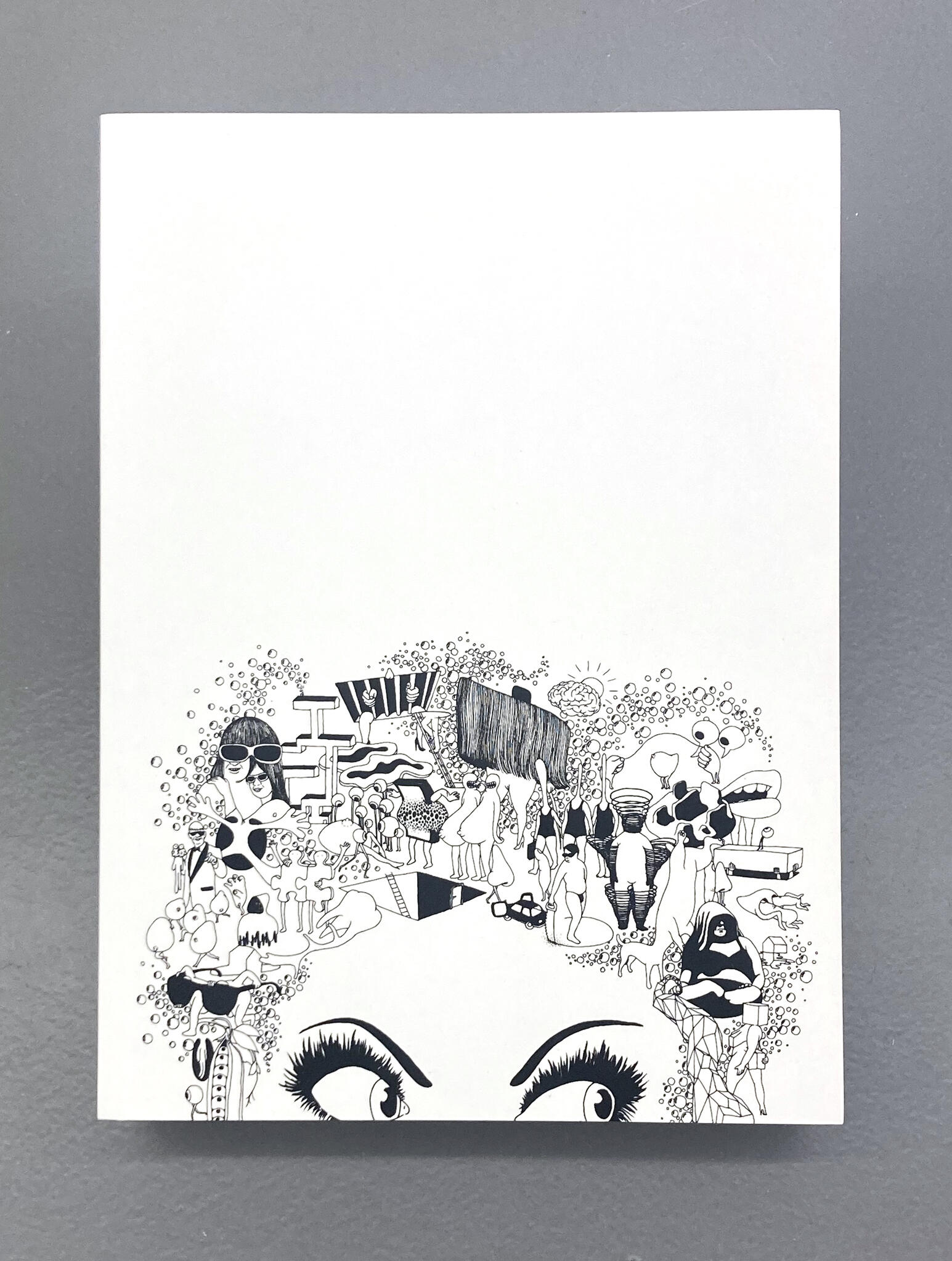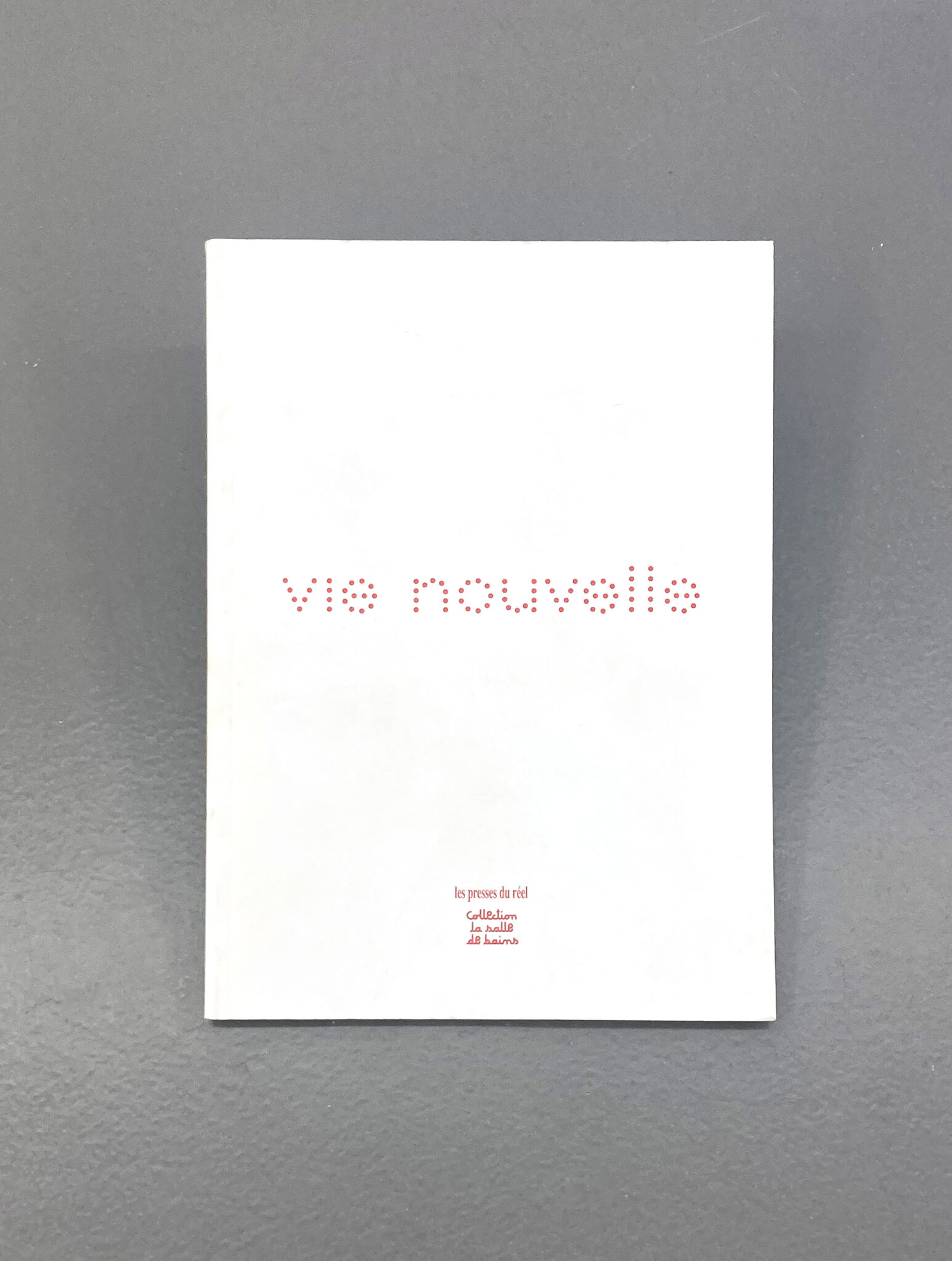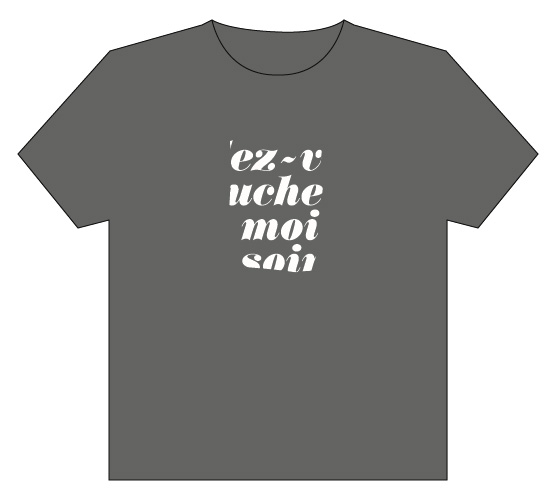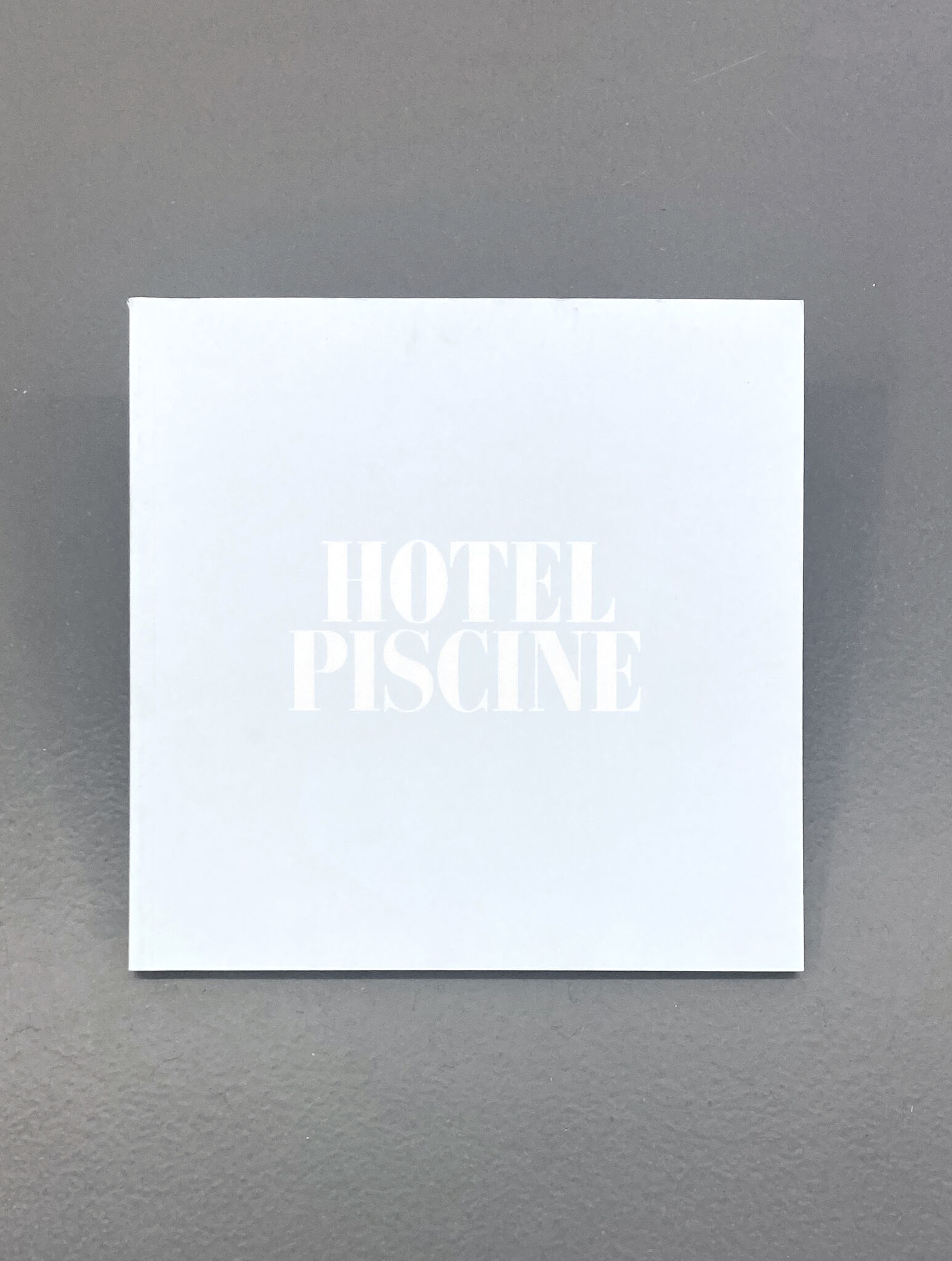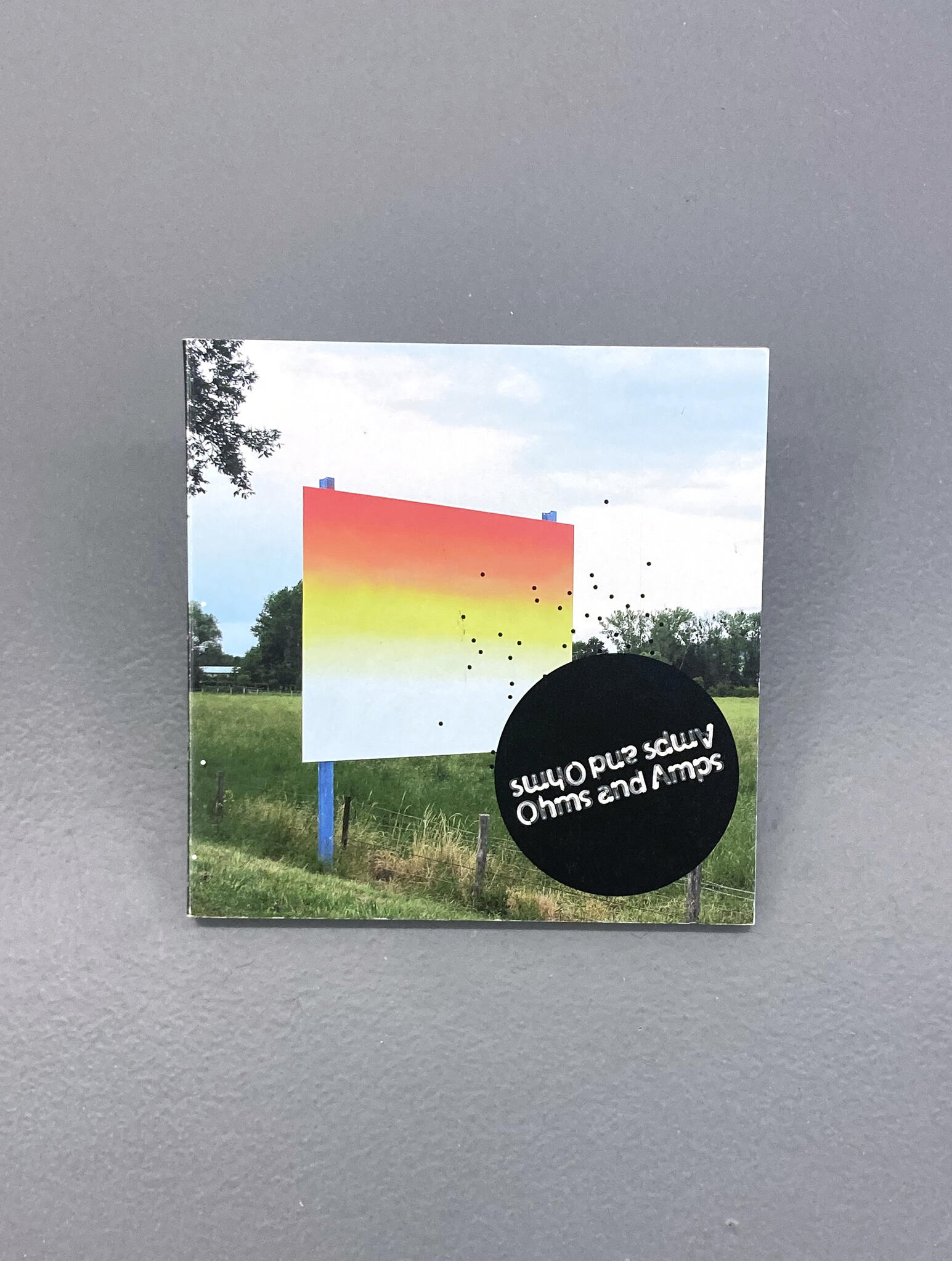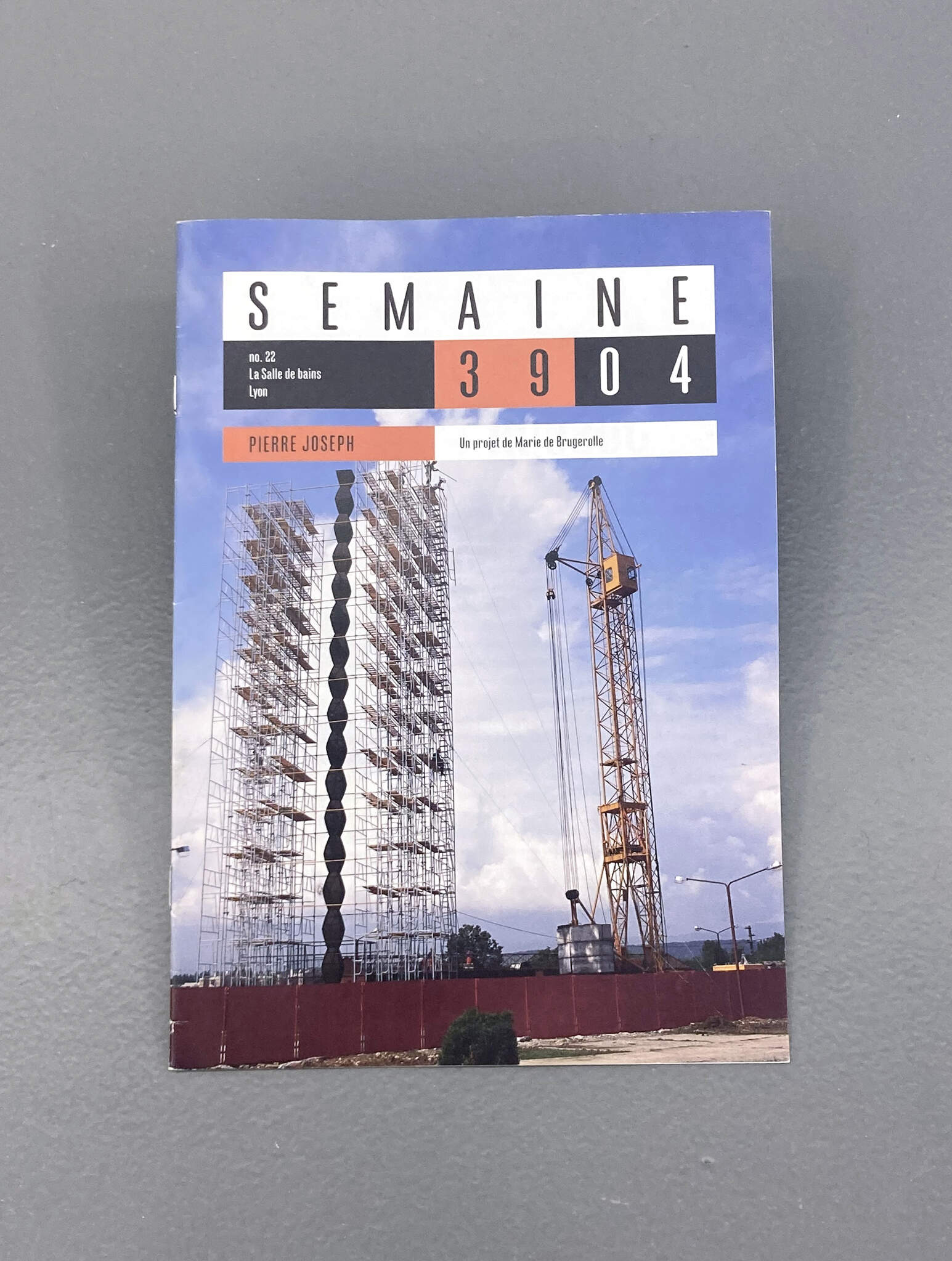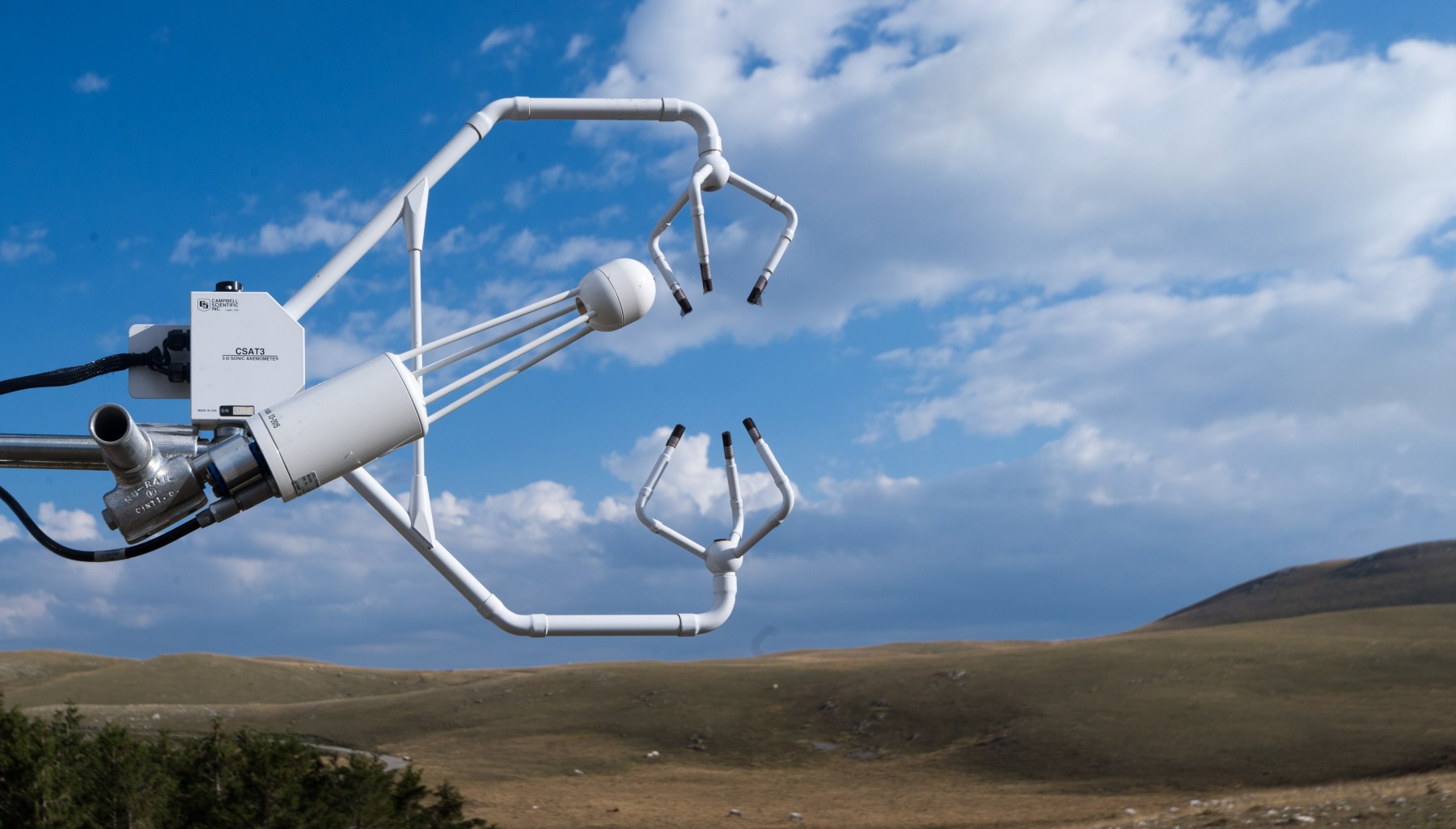

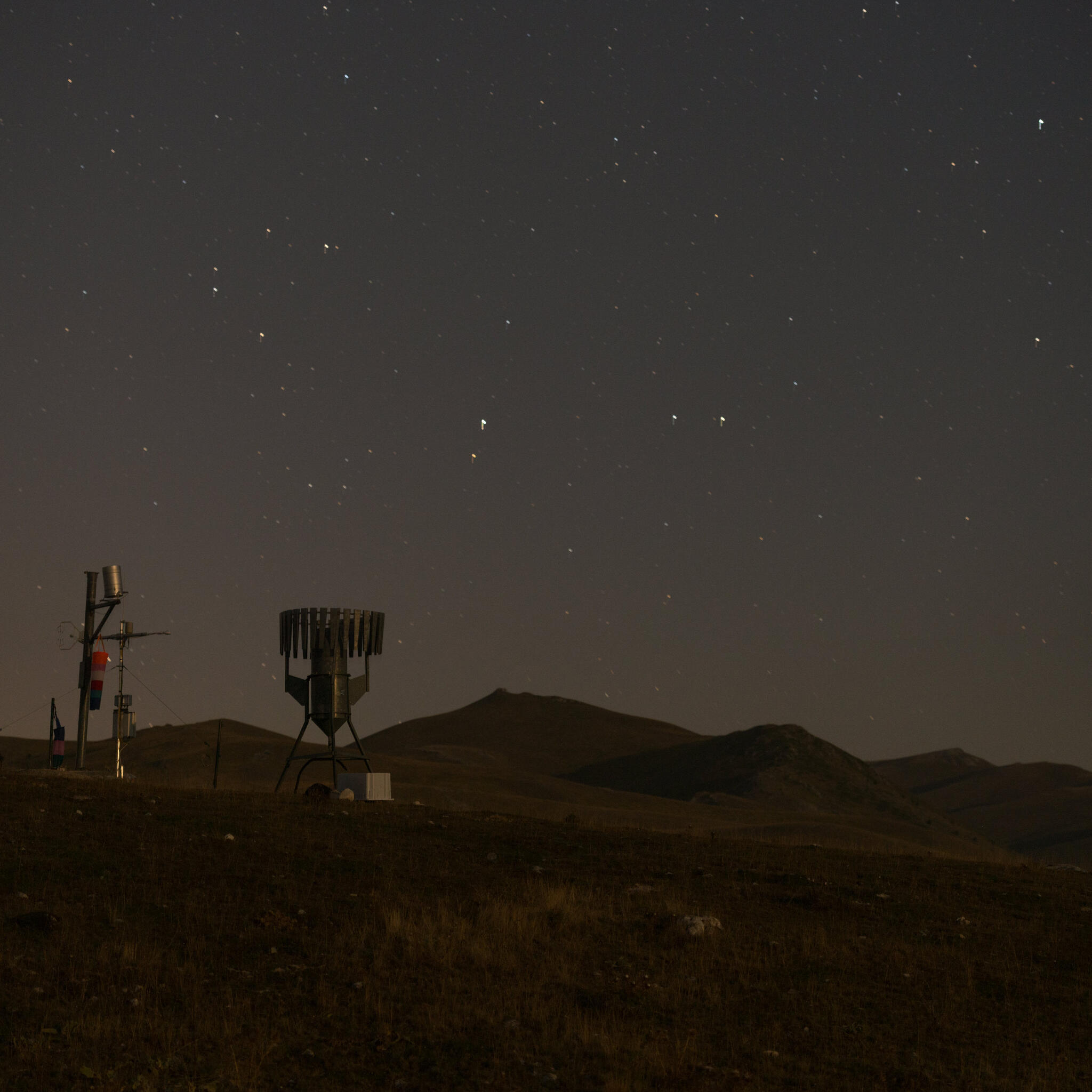
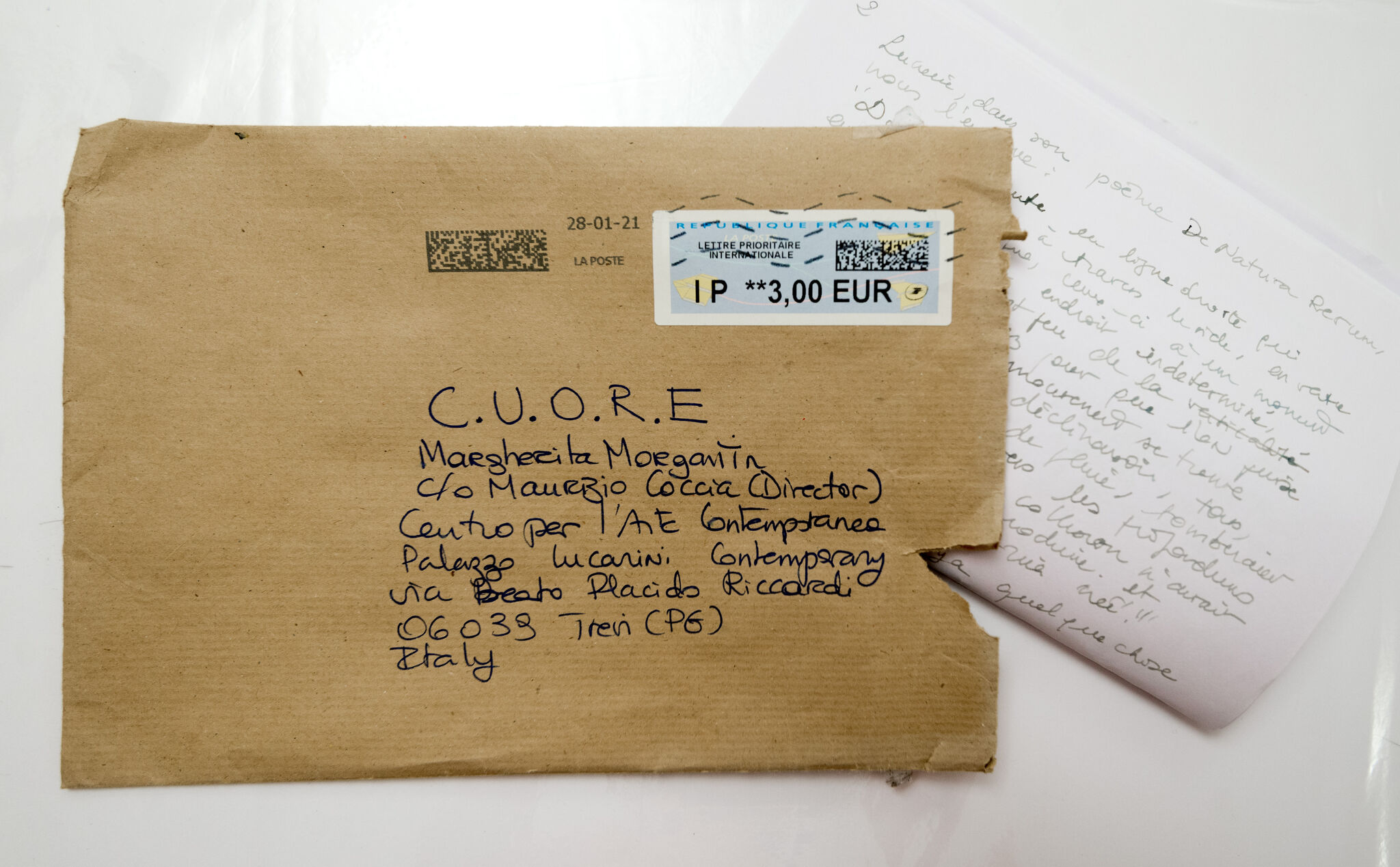
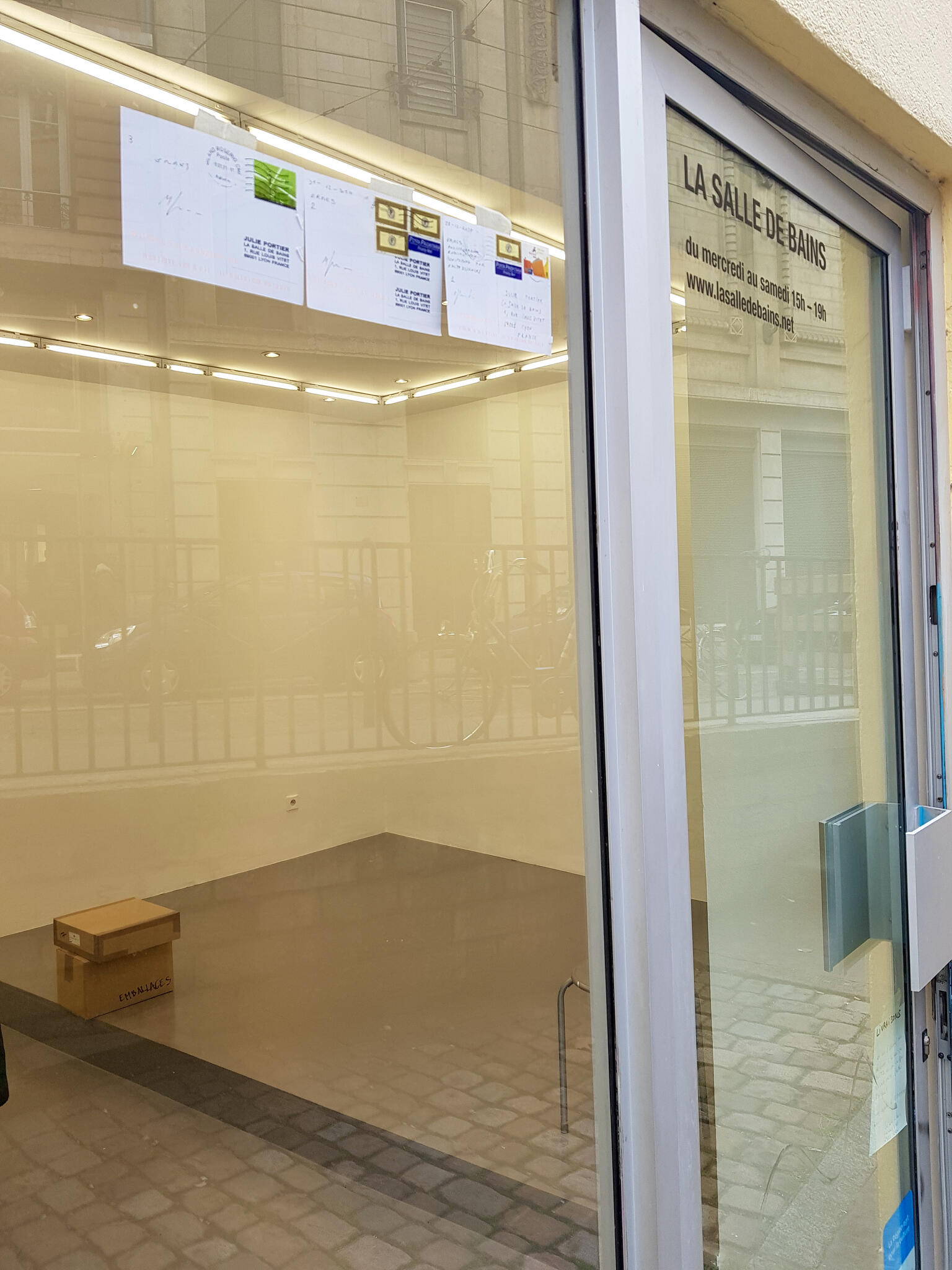
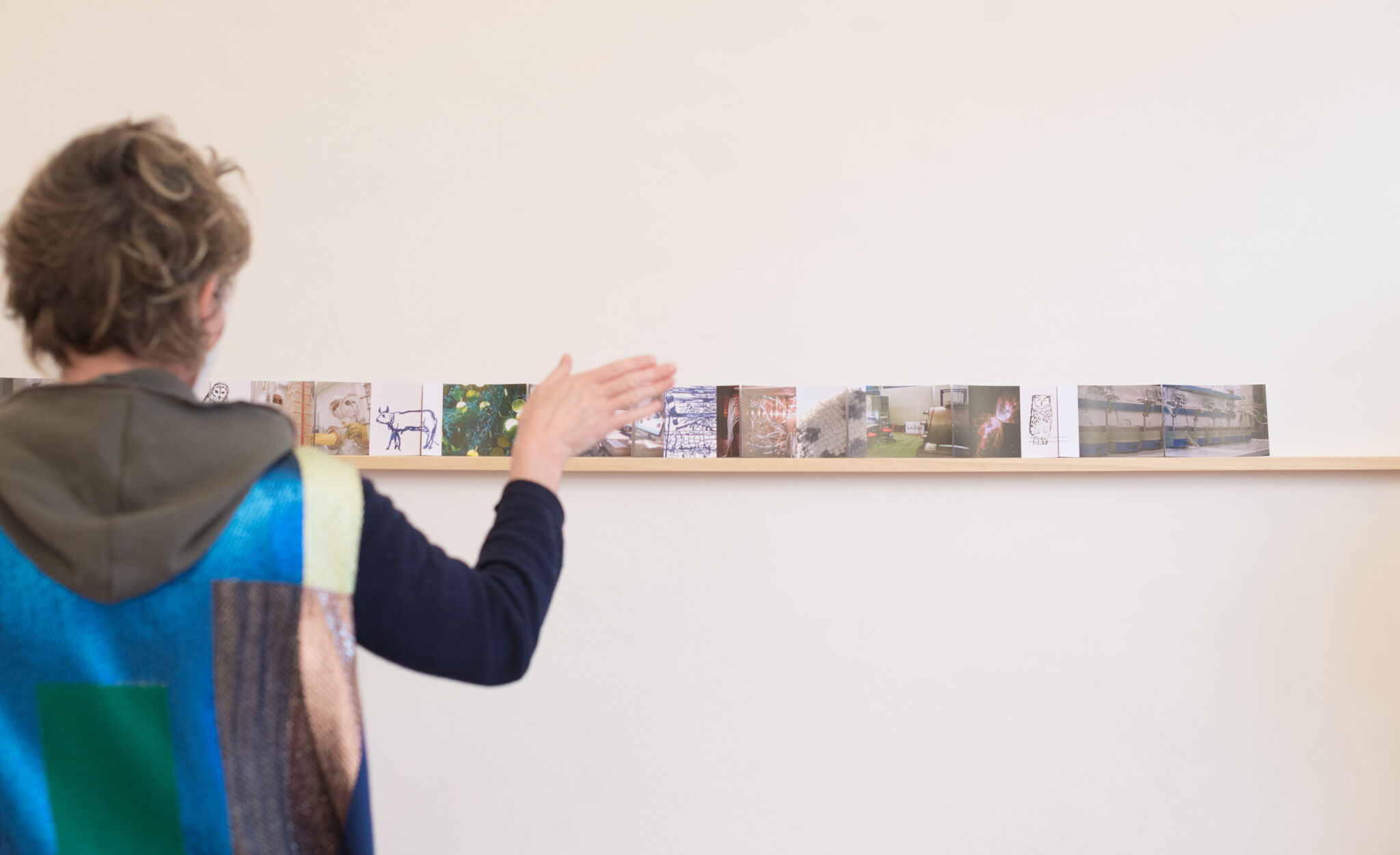
ERMES (Environmental Radioactivity Monitoring for Earth Sciences) – Margherita Morgantin
Pendant les premiers jours de la nouvelle année, VIP a atteint Lyon via une série de cartes postales que Margherita Morgantin a adressée à la Salle de bains et à l'historienne d'art Marie de Brugerolle. Cette dernière adresse une lettre en réponse à l'artiste où il est question d'apparitions et de disparitions.
Le 15 janvier 2021
Chère Margherita,
Je t’écris une lettre en réponse à ta carte postale.
La première fois que j’ai entendu parler de toi, c’était par une carte postale.
« Réjouis-toi de la gentillesse car la cruauté revient toujours », était-il écrit de ta main.
Plus tard tu m’as offert un des plus beaux voyages : une traversée en bateau, dans ton petit bateau à moteur, de Mestre à Venise. Ton chien Tempo se tenait à la proue. Voir ainsi la lagune au soleil couchant, dans cette lenteur, et l’écume blanche sur le vert glauque de la lagune, fut un moment de bonheur suspendu.
Tu commences ton projet V.I.P. le 21 juin 2020. Solstice d’été, éclipse de soleil.
Nous décidons d’un échange de correspondance le 28 novembre 2020.
Tu enverras 12 cartes postales à la Salle de bains, centre d’art de Lyon, et 1 à mon adresse. Envoyer et recevoir une carte missive aujourd’hui est un acte de résistance. À la dématérialisation, au « screen time. »
Qui attend encore une lettre ? J’ai attendu ta lettre. Avec curiosité, comme on attend un rendez-vous.
Le 21 décembre 2020, solstice d’hiver, jour le plus court et nuit la plus longue, conjonction de Jupiter et d’Uranus, j’apprenais une autre éclipse. Celle de Jacques Aubert, mon ami, traducteur de Joyce. Il a rejoint les étoiles ce même 28 novembre.
Jacques Aubert était un passeur, il m’a passé des choses de Joyce, que je te dirais plus loin, et des choses de Lucrèce, que je te dis tout de suite :
L’important, c’est le Clinamen.
Lucrèce, dans son poème De Natura Rerum, nous l’explique :
« Dans la chute en ligne droite qui emporte les atomes à travers le vide, en vertu de leur poids propre, ceux-ci, à un moment indéterminé, en un endroit indéterminé, s’écartent tant soit peu de la verticale, juste assez pour que l’on puisse dire que leur mouvement se trouve modifié. Sans cette déclinaison, tous, comme des gouttes de pluie, tomberaient de haut en bas à travers les profondeurs du vide ; entre eux nulle collision n’aurait pu naître, nul choc se produire ; et jamais la nature n’eut rien créé. »
C’est pour cela qu’il y a quelque chose plutôt que rien.
C’est aussi une question de glissement (slippage of the foot) de lapsus (slippage of the tongue) et de « pas de côté », de chute.
J’espérais ta lettre pour le 6 janvier, jour de l’Epiphanie. J’espérais voir Jacques Aubert ce jour-là.
Mais Jacques a pris un chemin de traverse, il a rejoint la poussière des étoiles.
L’Epiphanie est une célébration importante pour James Joyce. Littéralement, c’est une « manifestation », une « mise en lumière » (phaneim).C’est le moment de l’année où la lumière revient, les jours rallongent. C’est aussi un moment de révélation, de l’invisible.
Ton projet V.I.P. parle et joue de l’invisible, de ce qui est là mais dont la présence se manifeste autrement. Cela parle de physique (quantique) et aussi d’art et de philosophie, mais aussi de croyance. Dans les trois cas, cela passe par l’expérience.
Selon Le principe d’exclusion de Pauli, les électrons et les particules élémentaires appartenant à un même système ne peuvent pas se trouver simultanément dans le même état quantique. C’est sur ce principe qu’est fondée la physique moderne et notre compréhension actuelle de l’Univers et de la matière. En astrophysique, il expliquerait que les étoiles mortes ne s’effondrent pas sous l’effet de la gravitation. Cela rejoint ce que dit Lucrèce.
Particules élémentaires à la masse très faible. Antimatière. Trous Noirs.
Ces particules ont été découvertes en 1930 et nommées NEUTRINOS (petits neutres en Italien), le terme est repris par Pauli en 1932 (Principe de Pauli). En 1970 leur présence est attestée. Elle n’est pas perçue par les yeux mais constatée par l’énergie de leur déplacement. Entre 1999 et 2002, a captation de leurs mouvements, en quelque sorte, série d’expériences attestant leur masse.
1999/2000 ce sont aussi les années de développement du Post Médium en art (Rosalind Krauss) et des OOO : Objet Orienté Ontologie, puis en 2013 l’Hyperobjet par Tim Morton.
Cela s’inscrit dans le « réalisme spéculatif ».
J’ai écrit à ce sujet et exprimé mes doutes sur le retour de la transcendance.
Ma pensée s’inscrit dans la recherche de l’ « épiphanie du réel », c’est-à-dire une connaissance de celui-ci qui « projette parfois des ombres ».
Les neutrinos jouent un rôle-clé en physique des particules, en astrophysique et en cosmologie (les neutrinos du big bang, découplés du reste de la matière une seconde après la singularité initiale, sont les premiers fossiles de l’Univers), en particulier en liaison avec la matière noire. Sur Terre, ils sont produits dans l’interaction des rayons cosmiques dans les hautes couches de l’atmosphère (neutrinos atmosphériques), dans la désintégration des éléments radioactifs dans la croûte terrestre (neutrinos géologiques), ou dans les réacteurs nucléaires, mais aussi bien évidemment dans les accélérateurs de particules.
Ton travail de recherche, qui en passe par des expériences météorologiques (sur la montagne, en septembre) et des expériences au cœur du réacteur (sous la montagne), permet de déployer toutes les facettes de cette incidence fondamentale : nous serions des poussières d’étoiles. Ce qui est la conséquence d’une chute première, celle de météorites sur la Terre.
Donc, on en revient à la chute, et à la genèse. Béréshit est le premier mot de la Torah. Cela veut dire « dans le commencement »…mais aussi « il a créé six » ou « ils étaient six ». On nous rappelle le chaos précédent « Tohu Va Bohu ». Il est question de mouvement, d’agitation et de chute, à nouveau.
La torah se lit debout, et à voix haute, sur des rouleaux dont le début et la fin sont toujours laissés blancs, comme la page d’un livre à venir. Cet espace blanc est ce qui occupe Mallarmé lorsqu’il met en page « Un coup de dés » (1897) et ce qu’observera James Joyce lors de son séjour à Trieste et plus précisément à Pola (encore un « pôle »/paul)…
Joyce est à Pola/Trieste en 1905, année où Einstein énonce la théorie des « quantas ou « paquets d’énergie ».
Il rédige le Finnegans Wake entre 1923 et 1938 et invente pour ce travail le terme de « work in progress ». Littéralement, dans sa construction, sa forme de mise en page et sa modalité de lecture, l’ouvrage est traversé par des questions liées à la physique quantique, au principe d’incertitude d’Heisenberg (1927), de théologie thomiste. Le tout est volontairement inscrit dans le drame historique, quotidien, domestique et intime.
Il est remarquable que le WAKE s’écrive à la jonction de ces champs de pensée, et dans un temps historique charnière : entre les deux guerres mondiales, dans un coin d’Italie qui est alors dans l’Empire Austro-Hongrois, dans laquelle James Joyce, l’exilé volontaire, fréquente beaucoup les cercles Juifs. C’est en voyant la manière dont la Torah est lue, debout, en mouvement, à haute voix, sur des rouleaux, qu’il pensera la forme du Wake.
Le Wake n’est-il pas la « veille » et en Français « être encore debout » signifie ne pas dormir, être insomniaque, ou « en éveil», c’est-à-dire « en alerte », « attentif » ou « inquiet ».
Cette inquiétude J. Joyce l’emploie dans la construction d’un texte, comme un puzzle de briques, à partir des « particules élémentaires » que sont les lettres. Il y a 6 particules élémentaires, comme les 6 voyelles.
Les voyelles en Hébreu ne sont pas écrites, parfois remplacées par des points. Elles marquent le souffle de la langue. Invisibles, elles symbolisent l’Esprit. Comme les Neutrinos, ou les Quarks, on ne les voit pas mais on les sent, on en fait l’expérience, comme le seuil (treshold).
Chaque consonne est à considérer comme un « seuil », une porte, un passage.
Il est savoureux de penser que le mot QUARK a été donné par un savant (Murray Gell Mann, en 1963) à partir de sa lecture de Finnegans Wake. En effet, c’est la phrase :
« THREE QUARKS FOR MUSTER MARK” qui inspire le savant.
Quark en l’occurrence ne veut rien dire, c’est un mot sonore, qui traduit le cri des mouettes dans le passage…Un mot qu’on doit lire « à haute voix », un « chant d’oiseau ».
Tu veux écrire sur des rouleaux qui seront disposés sur des tables, Chère Margherita.
Finnegans Wake commence par un blanc. En Français « un blanc » dans une conversation, c’est un silence. Un silence en musique est un « soupir. » Le livre finit par trois points de suspension…
C’est qu’en fait lorsqu’on croit qu’il est fini, il recommence.
Ainsi « riverrun », le premier mot du texte est à entendre à la suite des mots de la dernière phrase : « A way a lone a last a loved a long the … »
En typographie, l’espace blanc devient féminin : UNE espace et non plus UN espace.
À Babylone, on écrivait sur des petits rouleaux, les « sceaux cylindres ».
Le Talmud de Babylone est celui que tu lis, que Joyce a lu, que j’ai reçu en cadeaux d’une Chère Amie en ce début d’année 2021.
Il nous rappelle que le livre tient par ses marges, puisque le commentaire, vivant et changeant de la Loi, qui est inscrite dans le Livre, est à la marge. Le fait que cela soit sur un rouleau, avec un espace au début et à la fin, signifie que la lecture n’est jamais finie. Une lecture INFINIE. C’est pour cela que lorsqu’on arrive à « the… » ce n’est pas THE END comme dans un film, mais le temps de reprendre le souffle et de naviguer à nouveau sur la rivière de la vie, ou de l’amour. Car si nous pouvions avoir fini de lire la Torah, nous serions aussi savants que le Créateur.
C’est aussi une manière de rendre le livre VIVANT et la LECTURE VIVE ( ALIVE).
Reprenant le bateau, qui est celui de Tristan et Yseult dans le Finnegans Wake, on retourne sur la rivière de la vie, la LIFFEY, qui traverse Dublin.
Ainsi des boucles se font, qui ne sont jamais closes mais se déroulent, comme des phylactères.
J’écris aussi en rouleau, pour que ça se déroule, comme une bobine de film.
Un rouleau posé sur une table, que ma lettre irait rejoindre, me ferait très plaisir.
Car dans cette attente de ta carte postale, reçue le 14 janvier 2021, j’ai vécu la perte d’une lettre, qui me manque, d’un double J.J. qui s’est fait la malle.
Alors lorsque j’ai reçu ta carte, écrite en rose pâle, prêt à s’effacer sur le blanc du rectangle de papier, j’ai été véritablement heureuse.
Un grille de 6 lignes par 12 lignes sur laquelle je pouvais lire l’annonce d’un futur :
YOU LIVE THE SURPRISE RESULTS OF OLD PLANS.
Les cases vides de ta carte sont les espaces de souffle dans lesquels je vais inscrire la suite.
Tes dessins, cartographies célestes, mesures du monde à l’aune de ton pas, de tes mouvements à l’adresse d’un soleil qui parfois s’éclipse, composent un C.U.O.R.E dans lequel je suis heureuse d’être insérée. Notre échange a pris son point de départ dans l’étape E.R.M.E.S., qui sans le H, silencieux comme un soupir en français, marque le manque d’une lettre, absente.
Cette lettre manquante est le « faux trou » dont Jacques Aubert parlait. Il fut pour moi un passeur de lumière et je te remercie de me permettre de relayer, à mon tour, une partie du message.
Ainsi ton écriture en partie invisible, ce travail en partie illisible, montre combien les mots et les images sont des ACTES. Merci, Chère Margherita.
Marie de Brugerolle
During the first few days of the new year, VIP reached Lyon via a series of postcards sent by Margherita Morgantin to la Salle de bains and to art historian Marie de Brugerolle, who wrote a letter in response to the artist on the subject of appearance and disappearance.
January 15, 2021
Dear Margherita,
I am writing you a letter in response to your postcard.
The first time I heard about you was through a postcard.
"Savor kindness because cruelty is always possible later. "It was written in your own hand.
Later you offered me one of the most beautiful gifts : a boat trip, in your little motorboat, from Mestre to Venice. Your dog Tempo stood at the bow. Seeing the lagoon in the setting sun, in that slow motion, and the white foam on the glaucous green of the lagoon, was a moment of suspended happiness.
You start your V.I.P. project on June 21, 2020. Summer solstice, eclipse of the sun.
We decide on an exchange of correspondence on November 28, 2020.
You will send 12 postcards to the Salle de Bains, art center of Lyon, and 1 to my address. Sending and receiving a postcard today is an act of resistance. To dematerialization, to "screen time. »
Who is still waiting for a letter? I've been waiting for your letter. With curiosity, as one waits for a "rendez-vous."
On December 21, 2020, winter solstice, shortest day and longest night, conjunction of Jupiter and Uranus, I learned of another eclipse. That of Jacques Aubert, my friend, Joyce's translator. He reached the stars that same November 28th.
Jacques Aubert was a passer, he passed on to me things from Joyce, which I will tell you later, and one thing from Lucretius, which I will tell you right away:
The important thing is the Clinamen.
Lucretius, in his poem De Natura Rerum, explains it to us:
"In the straight-line fall that carries the atoms through the void, by virtue of their own weight, they, at an indeterminate moment, in an indeterminate place, deviate from the vertical, just enough to be able to say that their movement is modified. Without this declination, all of them, like raindrops, would fall from top to bottom through the depths of the void; between them no collision could have been born, no shock would have occurred; and nature would never have created anything. »
That is why there is something rather than nothing.
It's also a question of slippage of the foot, of slippage of the tongue, and of "no sides", of falling.
I was hoping for your letter on January 6, Epiphany Day. I was hoping to see Jacques Aubert that day.
But Jacques took a side path, he joined the stardust, he passed away.
Epiphany is an important celebration for James Joyce. Literally it is a "manifestation", an "illumination" (phaneim), it is the time of year when the light comes back, the days get longer. It is also a moment of revelation, of the invisible.
Your V.I.P. project speaks and plays with the invisible, with what is there but whose presence manifests itself differently. It speaks of (quantum) physics and also of art and philosophy, but also of belief. In all three cases, it goes through experience.
According to Pauli's principle of exclusion, electrons and elementary particles belonging to the same system cannot be simultaneously in the same quantum state. It is on this principle that modern physics and our current understanding of the Universe and matter are based. In astrophysics, it would explain that dead stars do not collapse under the effect of gravitation. This is in line with what Lucretius says.
Elementary particles with very low mass. Antimatter. Black holes.
These particles were discovered in 1930 and named in NEUTRINOS (small neutrals in Italian), the term was taken up by Pauli in 1932 (Pauli's Principle). In 1970 their presence was attested. It is not perceived by the eyes but is observed by the energy of their movement. Between 1999 and 2002 the capture of their movements, so to speak : series of experiments attesting their mass.
1999/2000 are also the years of development of the Post Medium in Art (Rosalind Krauss) and the OOO : Object Oriented Ontology, then in 2013 the Hyperobject by Tim Morton. .
This is part of "speculative realism".
I have written about it and expressed my doubts about the return of transcendence. I've invented the überobject in 2014 and work now on the HYPNEROBJECT.
My thinking is part of the search for the "epiphany of the real", that is to say a knowledge of the real that "sometimes casts shadows".
Neutrinos play a key role in particle physics, astrophysics and cosmology (the neutrinos of the big bang, decoupled from the rest of matter one second after the initial singularity, are the first fossils of the Universe), especially in connection with dark matter. On Earth, they are produced in the interaction of cosmic rays in the upper layers of the atmosphere (atmospheric neutrinos), in the decay of radioactive elements in the earth's crust (geological neutrinos), or in nuclear reactors, but obviously also in particle gas pedals reactors, but obviously also in particle gas pedals.
Your research work, which includes meteorological experiments (on the mountain, in September) and experiments in the reactor core (under the mountain), makes it possible to deploy all the facets of this fundamental impact: we are created from stardust. This is the consequence of a first fall, that of meteorites on the Earth.
So, we come back to the fall, and to the genesis. Bereshit: is the first word of the Torah. It means "in the beginning" ... but also "he created six" or "they were six". We are reminded of the previous chaos "Tohu Va Bohu". It is about movement, restlessness and falling, again.
The torah is read standing, and aloud, on scrolls whose beginning and end are always left blank, like the page of an upcoming book. This white space and what Mallarmé occupies when he lays out "A roll of the dice", 1897, and what James Joyce will observe during his stay in Trieste and more precisely in Pola (another "pole"/paul)....
Joyce was at Pola/Trieste in 1905, the year Einstein put forward the theory of "quantas or energy packets".
He wrote the Finnegans Wake between 1923 and 1938 and coined the term "work in progress" for this work. Literally, in its construction, layout and reading, the work is crossed by questions related to quantum physics, Heisenberg's uncertainty principle (1927), and Thomistic theology. The whole is deliberately inscribed in the historical, daily, domestic and intimate drama.
It is remarkable that WAKE is written at the junction of these fields of thought, and in a pivotal historical time: between the two World Wars, in a corner of Italy that was then in the Austro-Hungarian Empire, where James Joyce, the voluntary exiled, frequented Jewish circles a lot. It is by seeing the way the Torah is read, standing, moving, aloud, on scrolls, that he will think of the form of the Wake.
Isn't the Wake "awake" and in English "still standing" means not sleeping, being insomniac, or "awake", meaning "alert", "attentive" or "worried".
J. Joyce uses this anxiety in the construction of a text, like a brick puzzle, from the "elementary particles" that are the letters. There are 6 elementary particles, like the 6 vowels.
Vowels in Hebrew are not written, sometimes replaced by dots. They mark the breath of the language. Invisible, they symbolize the Spirit. Like the Neutrinos, or the Quarks, we do not see them but we feel them, we experience them, like the threshold.
Each consonant is to be considered as a "threshold", a door, a passage.
It is pleasant to think that the word QUARK was given by a scholar (Murray Gell Mann, in 1963) from his reading of Finnegans Wake. Indeed, it is the phrase :
"THREE QUARKS FOR MUSTER MARK" that inspires the scholar.
Quark in this case means nothing, it is a sound word, which translates the cry of the seagulls in the passage... A word that must be read "aloud", a "bird song".
You want to write on rolls that will be placed on tables, Dear Margherita.
Finnegans Wake begins with a blank. In English "a blank" in a conversation is silence. A silence in music is a "sigh. "The book ends with three dots…
In fact, when you think it's over, it starts all over again.
Thus "riverrun", the first word of the text is to be heard after the words of the last sentence: "A way a lone a last a loved a long the ...".
In typography, the white space becomes feminine: ONE space and no longer ONE space.
In Babylon, one wrote on small stone rolls, the "cylinder seals".
The Babylonian Talmud is the one you read, that Joyce read, that I received as a gift from a Dear Friend at the beginning of 2021.
It reminds us that the book holds by its margins, since the living and changing commentary of the Law, which is inscribed in the Book, is in the margins. The fact that it is on a roll, with a space at the beginning and end, means that the reading is never finished. An INFINITE reading. That's why when you get to "the..." it's not THE END like in a movie, but time to catch your breath and navigate the river of life, or love, again. For if we could have finished reading the Torah, we would know as much the Creator.
It is also a way to make the book ALIVE and the READING ALIVE.
Taking back the boat, which is Tristan and Yseult in the Finnegans Wake, we return to the river of life, the LIFFEY, which runs through Dublin.
Thus loops are made, which are never closed but unroll, like phylacteries.
I also write on a roll, so that it unwinds, like a reel of film.
A roll of film on a table, which my letter would join, would make me very happy.
Because while I was waiting for your postcard, received on January 14, 2021, I experienced the loss of a letter, which I miss, from a double J.J. who has taken the midnight express.
So when I received your card, written in pale pink ink , ready to fade on the white of the rectangle of paper, I was truly happy.
A grid of 6 lines by 12 lines on which I could read the announcement of a future :
YOU LIVE THE SURPRISE RESULTS OF OLD PLANS.
The empty boxes on your card are the breathing spaces in which I will write to continue the book of life.
Your drawings, celestial cartographies, measurements of the world by the yardstick of your step, of your movements at the address of a sun that sometimes eclipses, compose a C.U.O.R.E in which I am happy to be inserted. Our exchange took its starting point in the E.R.M.E.S. stage, which without the H, silent as a sigh in French, marks the lack of a letter, absent.
This missing letter is the "false hole" that Jacques Aubert was talking about. He was for me a passer of light and I thank you for allowing me to relay, in my turn, part of the message.
Thus your writing, partly invisible, this work, partly illegible, shows how words and images are ACTS. Thank you, Dear Margherita.
Marie de Brugerolle
SPECIFIC OBJETS : Donald Judd, 1965
OOO: Objects Oriented Ontology. Hartman.
ÜBER OBJECTS/ Post Performance Future, 2014
HYPER OBJETS, Tim Morton, 2013
FUCKED UP OBJECTS, 2019
HYPNER OBJETS, à venir
SPECIFIC OBJETS : Donald Judd, 1965
OOO: Objects Oriented Ontology. Hartman.
ÜBER OBJECTS/ Post Performance Future, 2014
HYPER OBJETS, Tim Morton, 2013
FUCKED UP OBJECTS, 2019
HYPNER OBJETS, coming soon

She has also collaborated with many artists and choreographers. She’s part of the philosophical feminine collective ‘Diotima’. Margherita Morgantin’s works come in many diverse forms from drawing to performance, touching on language, philosophy, mathematics and visual culture. Contact and living in harmony, and observation and imagination are some of the dichotomies which pepper her work. Her artistic research begins with observation and the interpretation of familiar situations and ends with her works being able to inspire a dream-like imagination in the viewer. The concept of time in the artist's works is transformative, becoming an almost muffled descriptive dimension of the moods that the viewer is able to perceive, experiencing them, in her works.
Le projet de Margherita Morgantin est produit par Xing avec le soutien de l'Italian Council
